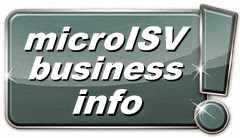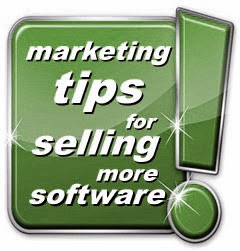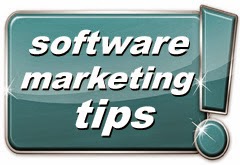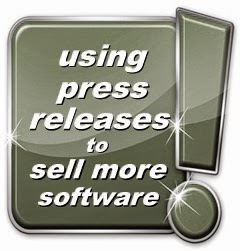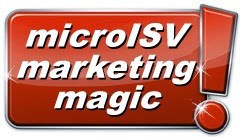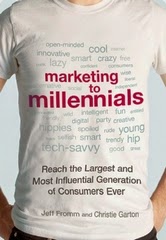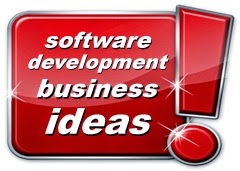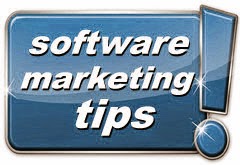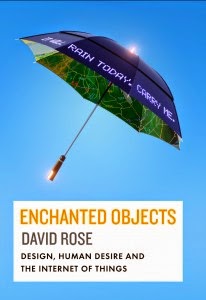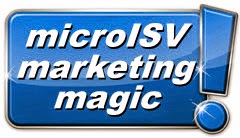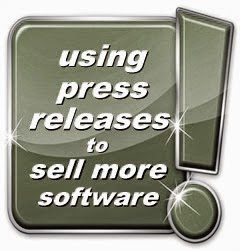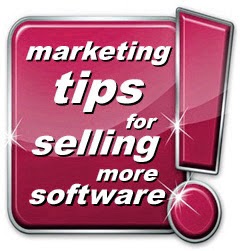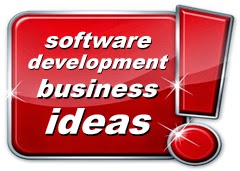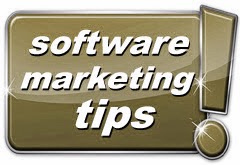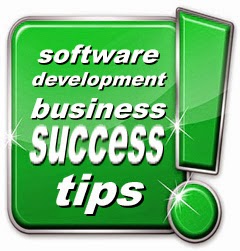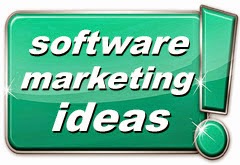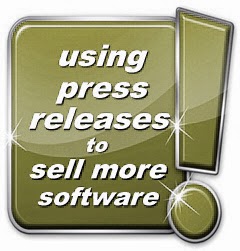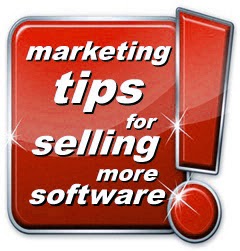Gartner completed a study earlier this year (as reported in the November 14, 2014 issue of Processor Magazine) that shows that 40% of US consumers who work for large corporations and nonprofits are part of the "bring your own device (BYOD) to work" movement. They routinely bring their laptop, notebook, tablet, or smartphone to work, and use their mobile device for both personal and business tasks.
The study found that 25% of workers who use their own device on the job are required by their company to use these personal devices at work. The remaining 75% of workers who use their own device on the job are a 50-50 mix of people whose BYOD activities are tolerated by management, and people who are doing company business on these devices "outside of managerial awareness."
In my opinion, it will take only a handful of well-publicized lawsuits to nudge large companies to take more control of the BYOD trend. Consider, for example, the case of a manager at a Fortune 100 company who has confidential information about a proposed merger or acquisition on his tablet. If that device is stolen, and the confidential information appears on an Internet news site, and that information is covered by a non-disclosure agreement (NDA), then nobody would be surprised by the multi-million dollar lawsuits that would be launched. Similarly, if confidential health or financial data about a company's employees or customers were leaked on the Internet, the legal liabilities could be astronomical.
Eventually, businesses and nonprofits will all be treating information on employees' personal mobile devices as mission-critical data. This is the time for software developers to make sure that their programs and apps are as secure as possible. These applications need to have the ability to completely and permanently delete information, and not simply mark files for deletion and dump them into recycle bins that can be recovered by anybody with a couple of hours of spare time and a $99 file-recovery program.
Security could very well be the criterion that separates winners from losers in the software marketplace in a world where BYOD problems could dominate the headlines.
Software marketing ideas from Al Harberg,
the Software Marketing Glossary guy from DP Directory, Inc.
Friday, December 26, 2014
Saturday, December 20, 2014
Sponsorships and Software Developers
"A well-chosen and well-managed sponsorship can move your brand forward more dramatically than almost any other marketing activity."
... quotation by David F. D'Alessandro from his book "Brand Warfare"
To learn more about brand association, or to learn more about D'Alessandro's book, visit my Software Marketing Glossary.
... quotation by David F. D'Alessandro from his book "Brand Warfare"
To learn more about brand association, or to learn more about D'Alessandro's book, visit my Software Marketing Glossary.
Thursday, December 18, 2014
Marketing is Science
"Marketing, like science, isn't about knowing all the answers when you start out. It's about experimenting, measuring the results, analyzing them, and then making adjustments based on what you find out."
So says Sergio Zyman in his book "The End of Marketing As We Know It." Marketing has nothing to do with having an intuitive feel for style or drama.
Marketing is science. You do stuff. You collect data, look at it, and make changes. Rinse. Repeat.
Be sure to analyze both your successes and your failures, Zyman urges.
Try things that might work. Then test, measure, and revise.
Zyman tells us not to be afraid to change tactics. Stick to the strategies, keep an eye on the destination, and try different tactics to meet your goals.
I'll leave you with one more quotation from Sergio Zyman:
"Don't be blinded by your assumptions. Just because you run a promotion and it works doesn't mean that it worked for the reasons that you thought it would."
So says Sergio Zyman in his book "The End of Marketing As We Know It." Marketing has nothing to do with having an intuitive feel for style or drama.
Marketing is science. You do stuff. You collect data, look at it, and make changes. Rinse. Repeat.
Be sure to analyze both your successes and your failures, Zyman urges.
Try things that might work. Then test, measure, and revise.
Zyman tells us not to be afraid to change tactics. Stick to the strategies, keep an eye on the destination, and try different tactics to meet your goals.
I'll leave you with one more quotation from Sergio Zyman:
"Don't be blinded by your assumptions. Just because you run a promotion and it works doesn't mean that it worked for the reasons that you thought it would."
Labels:
assumptions,
marketing is science,
Sergio Zyman
Tuesday, December 16, 2014
Tinkerers and the
Internet of Things (IoT)
Gartner tells us that it will be "inventors, tinkerers, and entrepreneurs who create and manufacture products" for the Internet of Things (IoT). As reported in the November 14, 2014 issue of Processor Magazine, Gartner does not believe that the software giants will be the people who drive the connection between electronic devices and the Internet.
For the next three years, it will be small, agile, hungry start-ups - the kind of people who brought us the shareware revolution in the 1980s that was eventually embraced by the entire software industry.
To read more about the Internet of Things and how it might unfold in the coming years, please check out my review of David Rose's book "Enchanted Objects - Design, Human Desire, and the Internet of Things."
For the next three years, it will be small, agile, hungry start-ups - the kind of people who brought us the shareware revolution in the 1980s that was eventually embraced by the entire software industry.
To read more about the Internet of Things and how it might unfold in the coming years, please check out my review of David Rose's book "Enchanted Objects - Design, Human Desire, and the Internet of Things."
Thursday, December 11, 2014
BYOD Backups
The Enterprise Strategy Group (ESG) asked IT professionals who are responsible for their enterprises' data protection if they ensure that BYOD data is backed up. The bring your own device (BYOD) trend has resulted in many employees bringing their own notebook, tablet, or smartphone to work. ESG wanted to know if the IT people who back up data that is stored on company devices also back up BYOD data stored on employees' devices.
Not so much.
"54% of organizations with formal endpoint backup policies either don't include employee-owned devices in their backup plans or aren't even sure if those devices are protected."
What are the reasons for not backing up BYOD data? The major excuses are:
For more details of the survey, check out the ESG blog.
In my opinion, IT departments will eventually take more responsibility for backing up BYOD information. Alternatively, they'll select laptop/notebook applications and tablet/smartphone apps that have full-featured backup processing that is so easy to use that their employees will actually use it.
You'll sell more software to businesses if your programs have rock-solid backup capabilities. Marketing isn't something that you do after you've designed an application. Marketing includes the functionality that you build into your program design. Build in some powerful backup capabilities, and your program will be a lot easier to sell.
Not so much.
"54% of organizations with formal endpoint backup policies either don't include employee-owned devices in their backup plans or aren't even sure if those devices are protected."
What are the reasons for not backing up BYOD data? The major excuses are:
- Not a strategic priority at this time - 48%
- No concerns about data loss - 38%
- Budget constraints - 31%
- Too much data to protect - 27%
- Burden on IT of data retrieval/recovery processes - 26%
- No compliance requirements - 22%
- No corporate policy - 21%
- Impact on data center (server) backup and recovery processes - 17%
- No concerns about downtime/productivity loss - 14%
For more details of the survey, check out the ESG blog.
In my opinion, IT departments will eventually take more responsibility for backing up BYOD information. Alternatively, they'll select laptop/notebook applications and tablet/smartphone apps that have full-featured backup processing that is so easy to use that their employees will actually use it.
You'll sell more software to businesses if your programs have rock-solid backup capabilities. Marketing isn't something that you do after you've designed an application. Marketing includes the functionality that you build into your program design. Build in some powerful backup capabilities, and your program will be a lot easier to sell.
Tuesday, December 9, 2014
The Value of Your Software
"The prospect must believe that your product has more value than his or her money."
... quotation by Joe Girard from his book "How to Close Every Sale"
To learn more about closing the sale, or to learn more about Girard's book, visit my Software Marketing Glossary.
... quotation by Joe Girard from his book "How to Close Every Sale"
To learn more about closing the sale, or to learn more about Girard's book, visit my Software Marketing Glossary.
Monday, December 8, 2014
Software Developers -
Know Your Audience
"Write as though you were addressing someone whose opinion you value," said Patricia T. O'Conner in her book "Words Fail Me - What Everyone Who Writes Should Know About Writing."
O'Conner urges writers to know the people whom we want to read their sales presentation. Identify your audience. Determine the correct vocabulary, tone, sentence structure, and imagery that you'll need to use to communicate effectively with your audience. Learn their level of sophistication, their likes and dislikes, and their demographic and psychographic attributes.
"Words Fail Me" is not about writing for the software development business. It's about writing in general. But O'Conner's ideas apply beautifully to our industry. In the software development industry, the texture of a microISV's sales presentation has to match the audience that she's trying to reach. Otherwise, prospects are going to find - and buy software applications from - her competitors.
Selling to Large Enterprises
If you're offering a mission-critical application to Fortune-500 line managers, you can't sound like you're an individual working from a kitchen table. Instead, you need to build your credibility and convey the impression that you're an established, thriving firm.
How do you build this kind of credibility when selling to Fortune-500 companies, universities, and large government institutions? Include your phone number and postal address on every page of your website. Brag about the level of customer support that you provide to your clients. Invite prospects to phone you during normal business hours (whatever that means) to discuss any questions or problems that they might have. Proudly offer multi-user and site licenses at attractive prices. Welcome purchase orders rather than requiring corporate buyers to use a credit card to start the buying process.
Selling to Entrepreneurs
If you're offering a business application to entrepreneurs, you can't describe it using technical language because your prospects won't understand you. Don't expect these software buyers to take the time to learn tech talk just to evaluate and use your program.
For example, if you say that your software requires DirectX 11, and your competitors don't say that their applications need DirectX 11, then a lot of your prospects are going to buy from your competitors. There's not one entrepreneur in ten who knows if their computer has DirectX 11 installed. And there's not one in a thousand who knows how to determine if they do or don't have it on their computer. Stop losing sales by confusing your prospects. Speak to them in a language that they understand.
Speak to business customers in simple business English. Avoid technical terms whenever possible. If you can't work around using computer jargon, then take the time to define the terms that you're using.
Many of your prospects speak English as a second language. To convince these people to make a buying decision, it's important to use common words to form short, simple sentences.
Selling Educational Software
If you're marketing educational software to parents and children, explain that you're a parent yourself, and talk in an inviting, conversational tone. You're delivering a sales message to prospects who share your frustrations with today's educational system. Write to them the way you would write to a friend.
Don't craft your online sales presentation the same way you would write about a business program. Instead, explain how you designed your software for your own children. Make prospects understand how easy your application is to install and use.
Fear of Writing
Many people are afraid to write. O'Conner believes that fear of writing is very often fear of your readers - your software prospects. The more you understand and talk to your audience, the easier it will become to write sales messages, user guides, and all of the documents that microISVs create every week.
In the software development world, many microISVs write for people like themselves. Instead, software developers should be writing for their target audience which is often made up of prospects who lack the technical background to easily understand the developer's website, help file, or promotional email messages.
Writing for Multiple Audiences
Never talk down to the reader, O'Conner reminds us. Sure, developers often have to describe their software using simple terms so that computer newbies and non-technical prospects can grasp the fundamentals. Find a way to simplify your writing without dumbing it down, and without talking down to prospects and customers.
One effective way to write for multiple audiences is to create multiple pathways through your website. For example, if you're selling network administration software, your prospects come from a wide range of technical backgrounds.
Some of the people who need your software are experienced networking veterans who understand the business. They're familiar with technical jargon, and they want your sales presentation to speak to them professionally.
You have other prospects who were promoted to the job of Network Administrator last week, and they're practically clueless about what to look for in a software package. They need a lot of hand-holding. Your sales message has to explain to them how your software can make their jobs easier.
How do you write effectively for both audiences? Create a read-out box on your home page with the title "Solutions for..." and include bullet points such as "Experienced Network Administrators" and "New Network Managers". If you're trying to coax users of competitive applications to switch to your software, then include bullet points for "Current users of Product-X".
Give each target audience a web page that speaks directly to their needs. Do a lot of defining and explaining for the newbies, and deliver a "Quick-Start" style presentation for the grizzled veterans.
Treat your reader respectfully, and your attitude will be reflected in your writing. The more you know about your prospects, the stronger your software marketing will be.
O'Conner urges writers to know the people whom we want to read their sales presentation. Identify your audience. Determine the correct vocabulary, tone, sentence structure, and imagery that you'll need to use to communicate effectively with your audience. Learn their level of sophistication, their likes and dislikes, and their demographic and psychographic attributes.
"Words Fail Me" is not about writing for the software development business. It's about writing in general. But O'Conner's ideas apply beautifully to our industry. In the software development industry, the texture of a microISV's sales presentation has to match the audience that she's trying to reach. Otherwise, prospects are going to find - and buy software applications from - her competitors.
Selling to Large Enterprises
If you're offering a mission-critical application to Fortune-500 line managers, you can't sound like you're an individual working from a kitchen table. Instead, you need to build your credibility and convey the impression that you're an established, thriving firm.
How do you build this kind of credibility when selling to Fortune-500 companies, universities, and large government institutions? Include your phone number and postal address on every page of your website. Brag about the level of customer support that you provide to your clients. Invite prospects to phone you during normal business hours (whatever that means) to discuss any questions or problems that they might have. Proudly offer multi-user and site licenses at attractive prices. Welcome purchase orders rather than requiring corporate buyers to use a credit card to start the buying process.
Selling to Entrepreneurs
If you're offering a business application to entrepreneurs, you can't describe it using technical language because your prospects won't understand you. Don't expect these software buyers to take the time to learn tech talk just to evaluate and use your program.
For example, if you say that your software requires DirectX 11, and your competitors don't say that their applications need DirectX 11, then a lot of your prospects are going to buy from your competitors. There's not one entrepreneur in ten who knows if their computer has DirectX 11 installed. And there's not one in a thousand who knows how to determine if they do or don't have it on their computer. Stop losing sales by confusing your prospects. Speak to them in a language that they understand.
Speak to business customers in simple business English. Avoid technical terms whenever possible. If you can't work around using computer jargon, then take the time to define the terms that you're using.
Many of your prospects speak English as a second language. To convince these people to make a buying decision, it's important to use common words to form short, simple sentences.
Selling Educational Software
If you're marketing educational software to parents and children, explain that you're a parent yourself, and talk in an inviting, conversational tone. You're delivering a sales message to prospects who share your frustrations with today's educational system. Write to them the way you would write to a friend.
Don't craft your online sales presentation the same way you would write about a business program. Instead, explain how you designed your software for your own children. Make prospects understand how easy your application is to install and use.
Fear of Writing
Many people are afraid to write. O'Conner believes that fear of writing is very often fear of your readers - your software prospects. The more you understand and talk to your audience, the easier it will become to write sales messages, user guides, and all of the documents that microISVs create every week.
In the software development world, many microISVs write for people like themselves. Instead, software developers should be writing for their target audience which is often made up of prospects who lack the technical background to easily understand the developer's website, help file, or promotional email messages.
Writing for Multiple Audiences
Never talk down to the reader, O'Conner reminds us. Sure, developers often have to describe their software using simple terms so that computer newbies and non-technical prospects can grasp the fundamentals. Find a way to simplify your writing without dumbing it down, and without talking down to prospects and customers.
One effective way to write for multiple audiences is to create multiple pathways through your website. For example, if you're selling network administration software, your prospects come from a wide range of technical backgrounds.
Some of the people who need your software are experienced networking veterans who understand the business. They're familiar with technical jargon, and they want your sales presentation to speak to them professionally.
You have other prospects who were promoted to the job of Network Administrator last week, and they're practically clueless about what to look for in a software package. They need a lot of hand-holding. Your sales message has to explain to them how your software can make their jobs easier.
How do you write effectively for both audiences? Create a read-out box on your home page with the title "Solutions for..." and include bullet points such as "Experienced Network Administrators" and "New Network Managers". If you're trying to coax users of competitive applications to switch to your software, then include bullet points for "Current users of Product-X".
Give each target audience a web page that speaks directly to their needs. Do a lot of defining and explaining for the newbies, and deliver a "Quick-Start" style presentation for the grizzled veterans.
Treat your reader respectfully, and your attitude will be reflected in your writing. The more you know about your prospects, the stronger your software marketing will be.
Labels:
sales writing,
selling software,
target audience
Friday, December 5, 2014
Waiting for Editors to Phone You
Eight or ten years ago, it was common for editors to phone or email software developers if they were going to print their press release information.
Today, however, it's very rare to hear from an editor. So, if you do receive a software editor's response to your press release, it's probably a good sign that the press will be interested in your application.
You'll generally find out that you're in print or posted on the Internet when prospects phone you, or when you notice an increase in your downloads, or when you receive a Google Alert. If an editor or blogger needs a screenshot, or wants an evaluation copy of your program, they may phone you before they print your information. But most editors won't notify microISVs before using their New Product Announcements.
Press releases give purchasers a chance to think about your software.
Your competitors are using news releases to sell more of their application programs. Press releases are a cost-effective way to generate sales. Start your news release campaign today.
Today, however, it's very rare to hear from an editor. So, if you do receive a software editor's response to your press release, it's probably a good sign that the press will be interested in your application.
You'll generally find out that you're in print or posted on the Internet when prospects phone you, or when you notice an increase in your downloads, or when you receive a Google Alert. If an editor or blogger needs a screenshot, or wants an evaluation copy of your program, they may phone you before they print your information. But most editors won't notify microISVs before using their New Product Announcements.
Press releases give purchasers a chance to think about your software.
Your competitors are using news releases to sell more of their application programs. Press releases are a cost-effective way to generate sales. Start your news release campaign today.
Wednesday, December 3, 2014
2015 Technology Trends
Gartner has released its list of strategic technology trends for 2015, as published in the October 31, 2014 issue of Processor Magazine. These are the trends that Gartner believes have the potential to make a major impact on businesses in the next three years. The research firm is urging businesses to understand and plan for these ten strategic technology trends:
Lots of business managers listen to Gartner's predictions. There may be some lucrative opportunities for small independent software vendors (microISVs) to develop applications to take advantage of these new technologies.
- Computing everywhere
- The Internet of Things (IoT)
- 3D printing
- Advanced, pervasive, and invisible analytics
- Context-rich systems
- Smart machines
- Cloud/client computing
- Software-defined applications and infrastructure
- Web-scale IT
- Risk-based security and self-protection
Lots of business managers listen to Gartner's predictions. There may be some lucrative opportunities for small independent software vendors (microISVs) to develop applications to take advantage of these new technologies.
Monday, December 1, 2014
Marketing Software to Millennials
Book Review of "Marketing to Millennials - Reach the Largest and Most Influential Generation of Consumers Ever" by Jeff Fromm and Christie Garton (Published by AMACOM, July 2013)
Millennials spend about $200 billion annually in the US. In addition, the authors argue that Millennials influence another $500 billion in spending because of their impact on their older family members, friends, and colleagues. Fromm and Garton believe that Millennials exert a lot more power and influence on society than any other demographic group. Whether you're selling consumer or business products and services, you have to start marketing effectively to this huge, influential group of consumers if you want your business to grow and prosper.
Not everybody agrees that the Millennials have this much clout. In the October 2014 issue of AARP Bulletin, there is a feature article that questions the wisdom of advertisers targeting Millennials while virtually ignoring consumers aged 50 and above. The article quotes Bob Hoffman, author of the book 101 Contrarian Ideas About Advertising: "The idea that the way to influence older consumers is by targeting younger consumers is the purest form of ageism. No one would dare argue that the way to influence women is to target men [or] to influence black people is to target white people."
Most people agree, however, that members of Generation X and Baby Boomers often seek advice from younger adults when considering buying tech products, including computer software. While it may be a mistake to ignore older buyers, it certainly makes sense to target Millennials. And that may require many software developers to adopt a different perspective.
The authors define Millennials as the 84 million Americans who were born between 1977 and 1995. They make up about a quarter of the US population. Generation Y is another name for Millennials.
There is not universal agreement about the definition of Millennials or Gen-Yers. In his book The Age Curve: How to Profit from the Coming Demographic Storm, Kenneth W. Gronbach defines Generation Y as the 100 million people in the US born between 1985 and 2010. Fromm and Garton included people born as early as 1977 because they wanted to study and discuss how Millennials behave after they have married and started raising children.
The Marketing to Millennials book is based upon a survey taken in 2011 and 2012 by Fromm's company, Barkeley, the largest employee-owned US ad agency, and two other institutions. They surveyed 4,259 Millennials (aged 16 to 34) and 1,234 older folks (aged 35 to 74). It's refreshing to read a marketing book that is based upon research, and not just the personal observations and opinions of one particular marketing professional. There is a lot of information in this book that can help small independent software vendors (microISVs) sell more software.
The researchers debunked the notion that Millennials are a homogeneous group. They grouped their findings into six distinct groups of Millennials, and described their attitudes and buying habits in depth. The researchers believe that Millennials' opinions are leading indicators in the areas of media consumption, advocacy, and social media usage. I think it's fair to add the consumption of tech hardware and software to that list, too.
How are Millennials different from Baby Boomers and members of Generation X? Millennials talk about the brands that they love. They use Facebook to tell a wide audience how they feel about consumer goods. The authors call this the "participation economy" because Millennials use social media to talk about the brands that they support throughout the entire product life cycle.
The authors quote Bill George of the Harvard Business School: "They (Millennials) want to interact. Measure 'Return on Involvement' not 'Return on Investment.'" Before the crowdsourced ratings found in Facebook and Twitter, and before review websites such as Yelp, consumers didn't have the option to deliver instant feedback to manufacturers and marketers. Things have changed.
Today, everybody can participate. The Millennials seem to think that companies should seek their opinions. They're not just passive consumers.
The authors cite the iOS and Android business models as an example of the power of Millennials' attitudes. Apple's proprietary approach to app development lies in sharp contrast to Android's open-source approach. Even Steve Wozniak is quoted in an Electronic Frontier Foundation (EFF) report extolling the virtues of Android's open system.
In 2011, iOS owned 60 percent of the marketplace of smartphones and tablets. By mid-2012, Apple's market share dropped to 16.9 percent, and Android owned 68.1 percent of the worldwide installed base. The authors believe that Android's open approach to software development contributed to its increase in market share. And Millennials had a huge influence on this turnaround.
Software developers are continually asking the question, "What application should I develop next?" Without getting into a dialog with Millennials, it would be easy to make a bad decision.
Millennials have more Facebook friends than non-Millennials. Lots more! Forty-six percent of Millennials have 200+ friends, while 19 percent of non-Millennials do.
Even more dramatic is the contrast between Millennials and non-Millennials when asked to react to the statements "I feel like I'm missing something if I'm not on Facebook every day." and "My life feels richer now that I am connected to more people through social media."
The authors call Millennials "Digital Natives." Even though Millennials and non-Millennials spend about the same amount of time on the web, Millennials contribute and use more content in their daily lives. They're much more likely to have their own blog and their own website. They subscribe to more data and news feeds. They upload much more content to the Internet. And they're somewhat more likely to rate products and services online.
Millennials are optimistic. Although they were clobbered by the recent downturn in the US economy, the Millennials, according to a Pew study, are upbeat about their financial prospects.
Millennials are trend setters. Their tastes today will be society's preferences in the coming years.
If you're trying to market software to Millennials, you need to understand how they view themselves, and not how they're viewed by people from other generations.
The best way to learn to think like a Millennial is to buy an Xbox. So says Rudy Wilson, the former VP of marketing for Frito-Lay. Don't assume that because you were once a teenager, Wilson tells us, you understand today's teenagers and young adults.
The authors believe that you'll raise your chances of marketing successfully to Millennials if you do these five things:
The book describes the six subgroups of Millennials - Hip-ennials, Old-School Millennials, Gadget Gurus, Clean and Green Millennials, Millennial Moms, and Anti-Millennials. There are detailed descriptions of the attitudes of each group, and suggestions for how to reach them with marketing and advertising messages. These descriptions can help software developers fine-tune the sales presentations on their websites.
There are counter-intuitive suggestions in the book that deliver insights on how to market to these folks. Ron Johnson, former VP of retail for Apple, said, "Look at the Apple Stores, which have annual sales averaging $40 million per store in a category that in 2000 everyone said would move entirely to the Internet. Today, the Apple Stores are the highest-performing stores in the history of retailing." Millennials have had a huge influence on the success of the Apple Stores. Similarly, they can make a big difference in most software developers' sales.
If you're a Baby Boomer or a member of Generation X, you need to read Marketing to Millennials. I found it to be a fascinating description of the attitudes and preferences of today's younger generation. And it gave me a lot of marketing insights about how to more effectively reach one quarter of the people living in the US.
Millennials spend about $200 billion annually in the US. In addition, the authors argue that Millennials influence another $500 billion in spending because of their impact on their older family members, friends, and colleagues. Fromm and Garton believe that Millennials exert a lot more power and influence on society than any other demographic group. Whether you're selling consumer or business products and services, you have to start marketing effectively to this huge, influential group of consumers if you want your business to grow and prosper.
Not everybody agrees that the Millennials have this much clout. In the October 2014 issue of AARP Bulletin, there is a feature article that questions the wisdom of advertisers targeting Millennials while virtually ignoring consumers aged 50 and above. The article quotes Bob Hoffman, author of the book 101 Contrarian Ideas About Advertising: "The idea that the way to influence older consumers is by targeting younger consumers is the purest form of ageism. No one would dare argue that the way to influence women is to target men [or] to influence black people is to target white people."
Most people agree, however, that members of Generation X and Baby Boomers often seek advice from younger adults when considering buying tech products, including computer software. While it may be a mistake to ignore older buyers, it certainly makes sense to target Millennials. And that may require many software developers to adopt a different perspective.
The authors define Millennials as the 84 million Americans who were born between 1977 and 1995. They make up about a quarter of the US population. Generation Y is another name for Millennials.
There is not universal agreement about the definition of Millennials or Gen-Yers. In his book The Age Curve: How to Profit from the Coming Demographic Storm, Kenneth W. Gronbach defines Generation Y as the 100 million people in the US born between 1985 and 2010. Fromm and Garton included people born as early as 1977 because they wanted to study and discuss how Millennials behave after they have married and started raising children.
The Marketing to Millennials book is based upon a survey taken in 2011 and 2012 by Fromm's company, Barkeley, the largest employee-owned US ad agency, and two other institutions. They surveyed 4,259 Millennials (aged 16 to 34) and 1,234 older folks (aged 35 to 74). It's refreshing to read a marketing book that is based upon research, and not just the personal observations and opinions of one particular marketing professional. There is a lot of information in this book that can help small independent software vendors (microISVs) sell more software.
The researchers debunked the notion that Millennials are a homogeneous group. They grouped their findings into six distinct groups of Millennials, and described their attitudes and buying habits in depth. The researchers believe that Millennials' opinions are leading indicators in the areas of media consumption, advocacy, and social media usage. I think it's fair to add the consumption of tech hardware and software to that list, too.
How are Millennials different from Baby Boomers and members of Generation X? Millennials talk about the brands that they love. They use Facebook to tell a wide audience how they feel about consumer goods. The authors call this the "participation economy" because Millennials use social media to talk about the brands that they support throughout the entire product life cycle.
The authors quote Bill George of the Harvard Business School: "They (Millennials) want to interact. Measure 'Return on Involvement' not 'Return on Investment.'" Before the crowdsourced ratings found in Facebook and Twitter, and before review websites such as Yelp, consumers didn't have the option to deliver instant feedback to manufacturers and marketers. Things have changed.
Today, everybody can participate. The Millennials seem to think that companies should seek their opinions. They're not just passive consumers.
The authors cite the iOS and Android business models as an example of the power of Millennials' attitudes. Apple's proprietary approach to app development lies in sharp contrast to Android's open-source approach. Even Steve Wozniak is quoted in an Electronic Frontier Foundation (EFF) report extolling the virtues of Android's open system.
In 2011, iOS owned 60 percent of the marketplace of smartphones and tablets. By mid-2012, Apple's market share dropped to 16.9 percent, and Android owned 68.1 percent of the worldwide installed base. The authors believe that Android's open approach to software development contributed to its increase in market share. And Millennials had a huge influence on this turnaround.
Software developers are continually asking the question, "What application should I develop next?" Without getting into a dialog with Millennials, it would be easy to make a bad decision.
Millennials have more Facebook friends than non-Millennials. Lots more! Forty-six percent of Millennials have 200+ friends, while 19 percent of non-Millennials do.
Even more dramatic is the contrast between Millennials and non-Millennials when asked to react to the statements "I feel like I'm missing something if I'm not on Facebook every day." and "My life feels richer now that I am connected to more people through social media."
The authors call Millennials "Digital Natives." Even though Millennials and non-Millennials spend about the same amount of time on the web, Millennials contribute and use more content in their daily lives. They're much more likely to have their own blog and their own website. They subscribe to more data and news feeds. They upload much more content to the Internet. And they're somewhat more likely to rate products and services online.
Millennials are optimistic. Although they were clobbered by the recent downturn in the US economy, the Millennials, according to a Pew study, are upbeat about their financial prospects.
Millennials are trend setters. Their tastes today will be society's preferences in the coming years.
If you're trying to market software to Millennials, you need to understand how they view themselves, and not how they're viewed by people from other generations.
The best way to learn to think like a Millennial is to buy an Xbox. So says Rudy Wilson, the former VP of marketing for Frito-Lay. Don't assume that because you were once a teenager, Wilson tells us, you understand today's teenagers and young adults.
The authors believe that you'll raise your chances of marketing successfully to Millennials if you do these five things:
- Realize that Millennials are early adopters of emerging technologies. Use these new technologies, along with the social media sites, to engage them.
- Help Millennials link up with your marketing people by creating an electronic tool that lets them speak to you directly.
- Find a way that Millennials can support your brand and, at the same time, show fellow Millennials that they know what they're talking about.
- Make your brand fun and full of adventure.
- Build a loyalty program that speaks to Millennials.
The book describes the six subgroups of Millennials - Hip-ennials, Old-School Millennials, Gadget Gurus, Clean and Green Millennials, Millennial Moms, and Anti-Millennials. There are detailed descriptions of the attitudes of each group, and suggestions for how to reach them with marketing and advertising messages. These descriptions can help software developers fine-tune the sales presentations on their websites.
There are counter-intuitive suggestions in the book that deliver insights on how to market to these folks. Ron Johnson, former VP of retail for Apple, said, "Look at the Apple Stores, which have annual sales averaging $40 million per store in a category that in 2000 everyone said would move entirely to the Internet. Today, the Apple Stores are the highest-performing stores in the history of retailing." Millennials have had a huge influence on the success of the Apple Stores. Similarly, they can make a big difference in most software developers' sales.
If you're a Baby Boomer or a member of Generation X, you need to read Marketing to Millennials. I found it to be a fascinating description of the attitudes and preferences of today's younger generation. And it gave me a lot of marketing insights about how to more effectively reach one quarter of the people living in the US.
Friday, November 28, 2014
Consumer Confidence Growing
The Consumer Electronics Association (CEA) found that US consumers are more confident about spending money on technology products. In fact, the CEA found that in July of 2014, consumers were more confident than they've been since the 2012 year-end holiday season.
The CEA says that this is a sign that the economy is getting better. CEA's chief economist and senior research director is quoted in the September 19, 2014 issue of Processor Magazine as saying, "The improved sentiment is helping establish a solid foundation for stronger tech spending."
CEA reported that consumer attitudes toward the broader economy were also tracking higher.
The CEA says that this is a sign that the economy is getting better. CEA's chief economist and senior research director is quoted in the September 19, 2014 issue of Processor Magazine as saying, "The improved sentiment is helping establish a solid foundation for stronger tech spending."
CEA reported that consumer attitudes toward the broader economy were also tracking higher.
Tuesday, November 25, 2014
Dollarize your Software
You need to set a dollar-value on every part of your product. That advice comes from Jeffrey J. Fox, the author of "How to Become a Marketing Superstar - Unexpected Rules that Ring the Cash Register."
Unless you know how much your software is worth to your prospects, you can't do the big-picture marketing functions that are necessary for your success. Knowing the value of your product or service to your prospects and customers is essential, Fox explains, when
And unless you know the specific dollar value of your software, you can't create the advertising messages you need to sell it, specifically
Software buyers don't care how long it took you to write your application, or how difficult it is to make it compatible with each new release of Mac OS, Windows, iOS, or Android. They only care about how much time or money it will save them.
Dollarize your software, and many of your marketing tasks will be simplified.
Unless you know how much your software is worth to your prospects, you can't do the big-picture marketing functions that are necessary for your success. Knowing the value of your product or service to your prospects and customers is essential, Fox explains, when
- Determining which product to develop next
- Segmenting your market
- Positioning your product
- Setting prices
And unless you know the specific dollar value of your software, you can't create the advertising messages you need to sell it, specifically
- Developing product claims for your web site
- Overcoming price objections from prospects
- Explaining product payback and return on investment (ROI)
Software buyers don't care how long it took you to write your application, or how difficult it is to make it compatible with each new release of Mac OS, Windows, iOS, or Android. They only care about how much time or money it will save them.
Dollarize your software, and many of your marketing tasks will be simplified.
Saturday, November 22, 2014
Should Software Developers
Offer Social Authentication?
Social authentication is catching on. Seventy-seven percent of adult US Internet users have created online accounts by using their social identities rather than creating new userid/password combinations. A poll taken by OnePoll and Gigya (as reported in the October 17, 2014 issue of Processor Magazine) shows that consumers are becoming more and more comfortable with this process.
The social authentication process is also known as "bring your own identity" or BYOID. Don't confuse BYOID with bring your own device (BYOD), the increasingly popular practice of employees bringing their personal notebooks, tablets, and smartphones to work.
According to the article, the main reasons that users like being able to create accounts and log into them by using their existing social networking information are
Software developers need to be aware of this new BYOID trend. If the difference between logging into your site (versus logging into a competitor's site) is that they offer the convenience of BYOID and you don't, then you could lose customers, traffic, and sales.
The social authentication process is also known as "bring your own identity" or BYOID. Don't confuse BYOID with bring your own device (BYOD), the increasingly popular practice of employees bringing their personal notebooks, tablets, and smartphones to work.
According to the article, the main reasons that users like being able to create accounts and log into them by using their existing social networking information are
- It's easier to point to a social networking account than to fill in a new registration form.
- Few users look forward to creating - and remembering - more userids and passwords.
- BYOID makes it easier to share information with colleagues on the social networks.
- Users feel that their data will be safer if they securely link to information on their social media site.
Software developers need to be aware of this new BYOID trend. If the difference between logging into your site (versus logging into a competitor's site) is that they offer the convenience of BYOID and you don't, then you could lose customers, traffic, and sales.
Thursday, November 20, 2014
Software Developers,
Know Your Customers!
"Know who your customers are and who just isn't one yet."
So says Julie Bick, author of "All I Really Need to Know in Business I Learned at Microsoft - Insider Strategies to Help You Succeed."
She urges us to study our customers and figure out which benefits are most important to them. That sounds like good software marketing advice.
So says Julie Bick, author of "All I Really Need to Know in Business I Learned at Microsoft - Insider Strategies to Help You Succeed."
She urges us to study our customers and figure out which benefits are most important to them. That sounds like good software marketing advice.
Monday, November 17, 2014
Understanding People
Selling is all about understanding people.
So says Joe M. Gandolfo, an insurance salesman and author of the sales book "Selling is 98 percent understanding human beings ... 2 percent product knowledge." Robert L. Shook talks about Gandolfo in his book "Ten Greatest Salespersons - What they say about selling."
Gandolfo tells us that a salesperson has to believe in his or her product or service. And you have to believe that you're going to close every sale.
While most microISVs don't do a lot of face-to-face selling, you can convey these attitudes on your website, too. Describe your software as something that you're proud of. And confidently ask your prospects to click the "buy now" button.
So says Joe M. Gandolfo, an insurance salesman and author of the sales book "Selling is 98 percent understanding human beings ... 2 percent product knowledge." Robert L. Shook talks about Gandolfo in his book "Ten Greatest Salespersons - What they say about selling."
Gandolfo tells us that a salesperson has to believe in his or her product or service. And you have to believe that you're going to close every sale.
While most microISVs don't do a lot of face-to-face selling, you can convey these attitudes on your website, too. Describe your software as something that you're proud of. And confidently ask your prospects to click the "buy now" button.
Wednesday, November 12, 2014
Telephone Interruptions and microISVs
We've been trained to believe that phone interruptions are legitimate. They're not, Alec Mackenzie tells us. Mackenzie is author of the book "The Time Trap - Twenty Reasons for Poor Time Management."
Mackenzie believes that we have all sorts of excuses for accepting phone calls that we shouldn't:
Mackenzie urges us to learn techniques for ending phone conversations. The author suggests things like "Before we hang up, ..." and "I just have a minute or two before I need to run, ...".
I disagree with Mackenzie's premise. I view incoming phone calls as opportunities to learn more about my customers and prospects. People who call me tell me things that allow me to change my services to make them more valuable to my software developer customers. Phone calls give me an opportunity to bounce new ideas off of prospects.
Sure, you can spend too much time on the phone. But as a general rule, most microISVs could significantly increase their income if they spent more time talking with customers and prospects.
Mackenzie believes that we have all sorts of excuses for accepting phone calls that we shouldn't:
- We don't want to offend people by not welcoming their phone calls.
- We want to know what's going on in the world.
- We think we deserve taking breaks, and phone calls are breaks.
- We believe phone calls provide fun opportunities to socialize.
Mackenzie urges us to learn techniques for ending phone conversations. The author suggests things like "Before we hang up, ..." and "I just have a minute or two before I need to run, ...".
I disagree with Mackenzie's premise. I view incoming phone calls as opportunities to learn more about my customers and prospects. People who call me tell me things that allow me to change my services to make them more valuable to my software developer customers. Phone calls give me an opportunity to bounce new ideas off of prospects.
Sure, you can spend too much time on the phone. But as a general rule, most microISVs could significantly increase their income if they spent more time talking with customers and prospects.
Monday, November 10, 2014
Categorizing your Software
Software buyers sort applications by category. And positioning is all about the location of your product in prospects' minds. As you start to design your next application, consider how you want prospective buyers to think about your new program. By designing your application with your market positioning in mind, you'll have a much easier time selling your new product to your target audience.
The History of Positioning
Fifteen years after Al Ries and Jack Trout wrote "Positioning: The Battle for Your Mind," Jack Trout released his updated analysis and insights on the topic of positioning. His new study of positioning is called "The New Positioning - The Latest on the World's #1 Business Strategy." The world had changed in those 15 years, and Trout has a lot to add to his earlier thinking about marketing and positioning.
The original Positioning book by Ries and Trout was a breakthrough because it changed the focus of marketing from what you do to the product to what you do to the mind of the prospect. We've learned a lot about the mind in recent years, and the current book talks about what we've learned, and how it should affect the way we do marketing.
Marketplace Forces Define Categories
Specifying a category for your product or service can be complicated. Here are some of Trout's latest ideas, translated into the software development industry.
Creating a product or service in a new category, Trout explains, makes it very difficult to sell. This is especially true, I think, in the software industry, for a number of reasons:
Who Creates Categories?
Trout says that companies don't create categories. Users do.
In my opinion, companies with substantial marketing budgets can do a lot to create their own categories. If you're a well-funded software publisher and you can get prospects to recognize your product or service, you stand a good chance of convincing them to categorize your application as you'd like. With a typical microISV budget, however, it can be quite a challenge.
It's difficult to invent a new category. It's usually easier to segment an existing category, and try to set yourself up as the market leader in your new sub-category.
Trout names a couple of exceptions - Tandem created fault-tolerant computers, and Orville Redenbacher created gourmet popping corn. But for the most part, marketers cannot easily create new categories for their products and services.
Your Current Marketplace Positioning
Is it better to try to get the world to accept your new category? Or can you sell more software by declaring that your program fits into an existing category, and that it has more features - perhaps unexpected features - than your competitors' offerings? It's complicated.
Is Your Niche Growing?
Your ability to create a new category for your software depends upon whether your software is in a growing marketing niche, a stable one, or one that is in decline.
If your software niche is growing and branching out into new directions, then you might be able to turn one of these branches into a new category, and dominate that category. We saw this happen with anti-virus software a few years ago. Several companies competed with each other with applications that were based upon huge databases of virus signatures. And a few companies broke away from the pack and took a different approach to protecting PCs from the bad guys. These innovative companies were able to create new categories - or at least new sub-categories - for their applications.
If your software is in a stable niche, then it's harder to create a new category for your applications. Unless you're doing something which is particularly innovative, you will have trouble convincing the public that you've introduced a new category of software.
If your software category is in decline, then you have an opportunity to define yourself in a new category. Your competitors are probably not spending a lot of money on product design or on advertising. You can take advantage of their passive marketing to nudge your program into a new category, and declare yourself to be the leader of this new product niche.
Take Me to Your Leader
Your ability to define a new category of software also depends upon whether your software niche has one (or more) established leaders, or whether there are a lot of contenders for that title with no obvious leader.
Breaking into, say, the zip archiving business would be very difficult today. And convincing people that your application does everything that they can get from the free archiving capabilities found in Windows, as well as the functionality found in WinZip and WinRAR, would be a difficult task. To go further, and position yourself as the publisher of an innovative new category of archiving application would be nearly impossible.
On the other hand, if you're competing with a number of microISVs, none of which has a leadership position in your marketing niche, then your chances of creating a new category for your program are much better. The buying public is less likely to know exactly what each of your competitors is offering. And that gives you a chance to define a new category for your application.
How Strong Is Your Budget?
Your ability to position your application in its own category depends a lot on the size of your marketing budget. If you can afford to launch and sustain an advertising campaign that defines your program as an innovative new application, then you might be able to create a new category for your brand.
If you're as innovative in your marketing as you are in your application, you might be able to craft a press release campaign to accomplish the same goal, at a significantly lower cost.
A lot of your success will depend upon how well funded your competitors are, how willing they are to compete with you, and how clever their marketing ideas are.
The Bottom Line
You probably can't control the entire marketplace when it comes to positioning your software in the optimal category. But knowing the issues and forces at work will make it easier to position your software properly.
The time to start thinking about software categories and positioning is when you're designing your application. Don't wait until you're beta testing your program to start thinking about how you're going to market it. You need to bake your marketing innovations into the software itself.
The History of Positioning
Fifteen years after Al Ries and Jack Trout wrote "Positioning: The Battle for Your Mind," Jack Trout released his updated analysis and insights on the topic of positioning. His new study of positioning is called "The New Positioning - The Latest on the World's #1 Business Strategy." The world had changed in those 15 years, and Trout has a lot to add to his earlier thinking about marketing and positioning.
The original Positioning book by Ries and Trout was a breakthrough because it changed the focus of marketing from what you do to the product to what you do to the mind of the prospect. We've learned a lot about the mind in recent years, and the current book talks about what we've learned, and how it should affect the way we do marketing.
Marketplace Forces Define Categories
Specifying a category for your product or service can be complicated. Here are some of Trout's latest ideas, translated into the software development industry.
Creating a product or service in a new category, Trout explains, makes it very difficult to sell. This is especially true, I think, in the software industry, for a number of reasons:
- Google and the other search engines are keyword and key phrase oriented, and often these words and phrases are categories. If your prospects don't know the category name, it will be more difficult for them to locate your application using search engines.
- When you send press releases to magazine and newspaper editors, many of these writers want to determine which cubbyhole your program fits into, so they can put it in context and compare it to similar software. Totally new software is a real challenge for columnists and reviewers. They may play it safe, ignore your application, and write instead about a program that's in a category that their readers will understand.
- When prospects search for software on a download site, they first select a category or type the category keywords into a search box. If your application doesn't fit neatly into an existing category, it's going to be very difficult to find on the download sites.
Who Creates Categories?
Trout says that companies don't create categories. Users do.
In my opinion, companies with substantial marketing budgets can do a lot to create their own categories. If you're a well-funded software publisher and you can get prospects to recognize your product or service, you stand a good chance of convincing them to categorize your application as you'd like. With a typical microISV budget, however, it can be quite a challenge.
It's difficult to invent a new category. It's usually easier to segment an existing category, and try to set yourself up as the market leader in your new sub-category.
Trout names a couple of exceptions - Tandem created fault-tolerant computers, and Orville Redenbacher created gourmet popping corn. But for the most part, marketers cannot easily create new categories for their products and services.
Your Current Marketplace Positioning
Is it better to try to get the world to accept your new category? Or can you sell more software by declaring that your program fits into an existing category, and that it has more features - perhaps unexpected features - than your competitors' offerings? It's complicated.
Is Your Niche Growing?
Your ability to create a new category for your software depends upon whether your software is in a growing marketing niche, a stable one, or one that is in decline.
If your software niche is growing and branching out into new directions, then you might be able to turn one of these branches into a new category, and dominate that category. We saw this happen with anti-virus software a few years ago. Several companies competed with each other with applications that were based upon huge databases of virus signatures. And a few companies broke away from the pack and took a different approach to protecting PCs from the bad guys. These innovative companies were able to create new categories - or at least new sub-categories - for their applications.
If your software is in a stable niche, then it's harder to create a new category for your applications. Unless you're doing something which is particularly innovative, you will have trouble convincing the public that you've introduced a new category of software.
If your software category is in decline, then you have an opportunity to define yourself in a new category. Your competitors are probably not spending a lot of money on product design or on advertising. You can take advantage of their passive marketing to nudge your program into a new category, and declare yourself to be the leader of this new product niche.
Take Me to Your Leader
Your ability to define a new category of software also depends upon whether your software niche has one (or more) established leaders, or whether there are a lot of contenders for that title with no obvious leader.
Breaking into, say, the zip archiving business would be very difficult today. And convincing people that your application does everything that they can get from the free archiving capabilities found in Windows, as well as the functionality found in WinZip and WinRAR, would be a difficult task. To go further, and position yourself as the publisher of an innovative new category of archiving application would be nearly impossible.
On the other hand, if you're competing with a number of microISVs, none of which has a leadership position in your marketing niche, then your chances of creating a new category for your program are much better. The buying public is less likely to know exactly what each of your competitors is offering. And that gives you a chance to define a new category for your application.
How Strong Is Your Budget?
Your ability to position your application in its own category depends a lot on the size of your marketing budget. If you can afford to launch and sustain an advertising campaign that defines your program as an innovative new application, then you might be able to create a new category for your brand.
If you're as innovative in your marketing as you are in your application, you might be able to craft a press release campaign to accomplish the same goal, at a significantly lower cost.
A lot of your success will depend upon how well funded your competitors are, how willing they are to compete with you, and how clever their marketing ideas are.
The Bottom Line
You probably can't control the entire marketplace when it comes to positioning your software in the optimal category. But knowing the issues and forces at work will make it easier to position your software properly.
The time to start thinking about software categories and positioning is when you're designing your application. Don't wait until you're beta testing your program to start thinking about how you're going to market it. You need to bake your marketing innovations into the software itself.
Saturday, November 8, 2014
Take Control of your Assumptions
"Don't be blinded by your assumptions. Just because you run a promotion and it works doesn't mean that it worked for the reasons that you thought it would."
... quotation by Sergio Zyman from his book "The End of Marketing As We Know It"
To learn more about assumptions, or to learn more about Zyman's book, visit my Software Marketing Glossary.
... quotation by Sergio Zyman from his book "The End of Marketing As We Know It"
To learn more about assumptions, or to learn more about Zyman's book, visit my Software Marketing Glossary.
Thursday, November 6, 2014
The Software Marketing Funnel
"Marketing is a funnel. You put undifferentiated prospects into the top. Some of them hop out, unimpressed with what you have to offer. Others learn about you and your organization, hear from their peers, compare offerings, and eventually come out the bottom, as customers."
These insights come from Seth Godin's 2006 book "Small is the New Big - and 183 other riffs, rants, and remarkable business ideas," a compendium of Godin's blog postings and his thoughts about blogging.
For a brick and mortar store, the sales funnel requires marketing and advertising to get people to visit the store, and merchandising to ensure that prospects find the products or services that they need to solve their problem. A powerful in-store sales message is also needed to close the sale.
On the Internet, the same elements are required. You have to position your software attractively, describe it convincingly, and deliver your sales presentation to your prospects. When prospects visit your website, they need to find an intuitive interface that is easy to navigate. You need a persuasive sales message that explains the features and benefits that your software offers.
Too many software developers concentrate on creating a state-of-the-art website that is driven by the latest technology. You'll sell a lot more software with a simple website that delivers a powerful sales message.
These insights come from Seth Godin's 2006 book "Small is the New Big - and 183 other riffs, rants, and remarkable business ideas," a compendium of Godin's blog postings and his thoughts about blogging.
For a brick and mortar store, the sales funnel requires marketing and advertising to get people to visit the store, and merchandising to ensure that prospects find the products or services that they need to solve their problem. A powerful in-store sales message is also needed to close the sale.
On the Internet, the same elements are required. You have to position your software attractively, describe it convincingly, and deliver your sales presentation to your prospects. When prospects visit your website, they need to find an intuitive interface that is easy to navigate. You need a persuasive sales message that explains the features and benefits that your software offers.
Too many software developers concentrate on creating a state-of-the-art website that is driven by the latest technology. You'll sell a lot more software with a simple website that delivers a powerful sales message.
Monday, November 3, 2014
Enchanted Objects, the Internet of
Things, and Software Developers
Book Review of Enchanted Objects - Design, Human Desire, and the Internet of Things by David Rose, published by Scribner
Too many software developers believe that desktop and laptop software are today's news, and that software as a service (SaaS), cloud computing, and smartphone apps are the next major technology hot buttons. Truth is, SaaS, the cloud, iOS, and Android are all mature markets. The next big trend on the horizon is the Internet of Things. And it's time for software developers to begin thinking about how they'll be profiting from this new movement.
In this July 2014 book, David Rose states that by the end of the decade, the Internet of Things (IoT) is going to change all of our lives as much as the Internet changed our lives beginning in the late 1990s. While lots of journalists are trying to predict the future of technology, Rose has hands-on knowledge of this new movement. He spent the last 20 years developing toys, furniture, jewelry, and other objects that are connected to the Internet. He teaches at MIT's Media Lab, and has started a number of IoT companies. And he sees a bright future in the creation of what he calls "enchanted objects."
In Rose's vision of the future, the connection between people and machines will have a lot less clicking and dragging, and a lot more enchantment. He believes that ordinary objects will be turned into extraordinary ones, without our having to navigate menus or learn a new system of gestures.
The author is fascinated with the magical objects that have captivated humans for centuries, from ancient legends to today's pop culture. He believes that the future of computing lies in the creation of enchanted objects that will change our lives.
Rose was concerned about the personal tragedy and the skyrocketing costs that are caused by people not taking the pills that their doctors have prescribed for them. Depending upon which study you believe, people take between 40 and 60 percent of the medications that have been prescribed.
Rose invented the GlowCap. "It looks like a regular, childproof, amber medicine bottle, but has a special cap that glows...It has enchanted users enough that people who own one take their medications over 90 percent of the time."
In addition to reminding users visually to take their pills, the GlowCap is connected to the AT&T Cellular Network. It texts or phones the patient with a reminder to take a pill. It also notifies their friends, relatives, and doctors who can encourage them to take their medicine. The GlowCap even contacts the pharmacy when a refill is needed.
Rose envisions a future in which "small amounts of computation, connectivity, and interaction" can transform our lives. Simple, enchanted objects can make us healthier and happier.
Enchanted objects will compete with three other visions of the future. The current marketplace leader, of course, is what Rose pejoratively refers to as the glass slab. Rose believes that smartphones, tablets, and computers will "continue to expand, consuming everything in {their] path." He poo-poos Google Glass, for example, as yet another glass slab with its tiny screen and its new gestures for marching up and down menus.
The second movement is the prosthetics and wearables trend. Since the creation of the cochlear implant in the 1960s, people born without hearing have been able to recognize at least 90 percent of spoken words (and 100 percent when combined with lip reading). Many of today's wearables are costly and bulky. Both of these flaws should diminish in the future. While there is a lot of merit to wearable devices, Rose prefers a future in which stand-alone enchanted objects help us solve our technology-related problems.
The third alternative to enchanted objects are social robots. Rose will grant you that the Roomba vacuum cleaning robot is cute. But he doesn't believe that robots that resemble humans will be accepted by most people.
So enchanted objects it is, Rose advises.
Rose shares a few dozen stories about specific products - specific enchanted objects - that have changed people's lives. I found some of them to be compelling, and others to be measurably less so. But I'm sure that I'll have the same reaction to the countless "Top Applications in 2014" articles that will be published by consumer and business tech magazines in the coming months. I doubt that Rose expected all of his readers to fall in love with all of the enchanted objects that he describes.
There's an in-depth discussion about human drives, and how enchanted objects can help us deal with these all-too-human needs. Rose discusses solutions to our need to know what is going on around us, our desire to be connected to our friends, loved ones, and colleagues, our need for safety and security, our need to be healthy, our desire to travel from place to place, and our need to express ourselves in many ways.
Rose discusses the seven "abilities of enchantment." They are glanceability, gestureability, affordability, wearability, indestructibility, usability, and lovability. For today's software developers who will be designing tomorrow's Internet-enabled technologies, Rose's discussion presents an in-depth analysis of which design elements work, and which failed to engage a significant segment of the buying public. It's hardly a blueprint of what needs to be developed in the future. But it's the best roadmap that's available at this early stage of the IoT.
The three things that I love about this book are (1) Rose's clear vision of how technology should change in the coming decades, (2) his analysis of the marketplace and the way he delivers his analysis in logical, bite-size pieces, and (3) the enthusiastic and optimistic view of the evolution of the human-machine connection.
According to the latest news from ABI Research, as reported in the September 19, 2014 issue of Processor Magazine, the Internet of Things is poised for a huge growth spurt in the next six years. ABI predicts that the IoT will pass the 16 billion mark for connected wireless devices by the end of 2014. That number will grow to 40.9 billion devices by 2020. Only 32 percent of the connected devices will be smartphones, tablets, and PCs. The opportunities are promising for microISVs who embrace this new technology today, and prepare for the future. There may be a lot of enchantment in the future of microISVs in the software development industry.
Learn more about David Rose's book "Enchanted Objects" on amazon.com.
Too many software developers believe that desktop and laptop software are today's news, and that software as a service (SaaS), cloud computing, and smartphone apps are the next major technology hot buttons. Truth is, SaaS, the cloud, iOS, and Android are all mature markets. The next big trend on the horizon is the Internet of Things. And it's time for software developers to begin thinking about how they'll be profiting from this new movement.
In this July 2014 book, David Rose states that by the end of the decade, the Internet of Things (IoT) is going to change all of our lives as much as the Internet changed our lives beginning in the late 1990s. While lots of journalists are trying to predict the future of technology, Rose has hands-on knowledge of this new movement. He spent the last 20 years developing toys, furniture, jewelry, and other objects that are connected to the Internet. He teaches at MIT's Media Lab, and has started a number of IoT companies. And he sees a bright future in the creation of what he calls "enchanted objects."
In Rose's vision of the future, the connection between people and machines will have a lot less clicking and dragging, and a lot more enchantment. He believes that ordinary objects will be turned into extraordinary ones, without our having to navigate menus or learn a new system of gestures.
The author is fascinated with the magical objects that have captivated humans for centuries, from ancient legends to today's pop culture. He believes that the future of computing lies in the creation of enchanted objects that will change our lives.
Rose was concerned about the personal tragedy and the skyrocketing costs that are caused by people not taking the pills that their doctors have prescribed for them. Depending upon which study you believe, people take between 40 and 60 percent of the medications that have been prescribed.
Rose invented the GlowCap. "It looks like a regular, childproof, amber medicine bottle, but has a special cap that glows...It has enchanted users enough that people who own one take their medications over 90 percent of the time."
In addition to reminding users visually to take their pills, the GlowCap is connected to the AT&T Cellular Network. It texts or phones the patient with a reminder to take a pill. It also notifies their friends, relatives, and doctors who can encourage them to take their medicine. The GlowCap even contacts the pharmacy when a refill is needed.
Rose envisions a future in which "small amounts of computation, connectivity, and interaction" can transform our lives. Simple, enchanted objects can make us healthier and happier.
Enchanted objects will compete with three other visions of the future. The current marketplace leader, of course, is what Rose pejoratively refers to as the glass slab. Rose believes that smartphones, tablets, and computers will "continue to expand, consuming everything in {their] path." He poo-poos Google Glass, for example, as yet another glass slab with its tiny screen and its new gestures for marching up and down menus.
The second movement is the prosthetics and wearables trend. Since the creation of the cochlear implant in the 1960s, people born without hearing have been able to recognize at least 90 percent of spoken words (and 100 percent when combined with lip reading). Many of today's wearables are costly and bulky. Both of these flaws should diminish in the future. While there is a lot of merit to wearable devices, Rose prefers a future in which stand-alone enchanted objects help us solve our technology-related problems.
The third alternative to enchanted objects are social robots. Rose will grant you that the Roomba vacuum cleaning robot is cute. But he doesn't believe that robots that resemble humans will be accepted by most people.
So enchanted objects it is, Rose advises.
Rose shares a few dozen stories about specific products - specific enchanted objects - that have changed people's lives. I found some of them to be compelling, and others to be measurably less so. But I'm sure that I'll have the same reaction to the countless "Top Applications in 2014" articles that will be published by consumer and business tech magazines in the coming months. I doubt that Rose expected all of his readers to fall in love with all of the enchanted objects that he describes.
There's an in-depth discussion about human drives, and how enchanted objects can help us deal with these all-too-human needs. Rose discusses solutions to our need to know what is going on around us, our desire to be connected to our friends, loved ones, and colleagues, our need for safety and security, our need to be healthy, our desire to travel from place to place, and our need to express ourselves in many ways.
Rose discusses the seven "abilities of enchantment." They are glanceability, gestureability, affordability, wearability, indestructibility, usability, and lovability. For today's software developers who will be designing tomorrow's Internet-enabled technologies, Rose's discussion presents an in-depth analysis of which design elements work, and which failed to engage a significant segment of the buying public. It's hardly a blueprint of what needs to be developed in the future. But it's the best roadmap that's available at this early stage of the IoT.
The three things that I love about this book are (1) Rose's clear vision of how technology should change in the coming decades, (2) his analysis of the marketplace and the way he delivers his analysis in logical, bite-size pieces, and (3) the enthusiastic and optimistic view of the evolution of the human-machine connection.
According to the latest news from ABI Research, as reported in the September 19, 2014 issue of Processor Magazine, the Internet of Things is poised for a huge growth spurt in the next six years. ABI predicts that the IoT will pass the 16 billion mark for connected wireless devices by the end of 2014. That number will grow to 40.9 billion devices by 2020. Only 32 percent of the connected devices will be smartphones, tablets, and PCs. The opportunities are promising for microISVs who embrace this new technology today, and prepare for the future. There may be a lot of enchantment in the future of microISVs in the software development industry.
Learn more about David Rose's book "Enchanted Objects" on amazon.com.
Friday, October 31, 2014
Use Marketing
to Make Money
"You don't make any money until you sell the stuff," says Sergio Zyman, the author of the book "The End of Marketing As We Know It."
"And you can't sell the stuff until you've gotten people to want it. And that's what marketing does."
"And you can't sell the stuff until you've gotten people to want it. And that's what marketing does."
Wednesday, October 29, 2014
What Do People Buy From You?
microISVs need to understand the business they're in.
So say John L. Stanton and Richard J. George, the authors of "Success Leaves Clues - A Marketer's Guide to Winning Strategy."
The business that you're in is not what you make. It's what people buy from you. And it's the problem that your product or service solves.
Understanding the business that you're in is very important when you're deciding which application you should develop next. Translated into the software development industry, the questions that Stanton and George want you to ask are:
So say John L. Stanton and Richard J. George, the authors of "Success Leaves Clues - A Marketer's Guide to Winning Strategy."
The business that you're in is not what you make. It's what people buy from you. And it's the problem that your product or service solves.
Understanding the business that you're in is very important when you're deciding which application you should develop next. Translated into the software development industry, the questions that Stanton and George want you to ask are:
- Do I have the ability to develop this new software?
- Will my software-buying target market buy it?
- Will the competition allow me to succeed?
- Can I create this new application and still be consistent with my strategic and financial objectives?
Monday, October 27, 2014
Market to a Woman's
Peripheral Vision
Women and men make buying decisions differently.
So say Faith Popcorn and Lys Marigold in their 2001 book "EVEolution - Understanding Women - Eight Essential Truths that Work in Your Business and Your Life."
Women make 80 percent of all buying decisions. Because of political correctness, marketers have been told that it's wrong to treat women and men differently when it comes to analyzing how they make buying decisions. Finally, somebody has the courage to say that it's important to learn how to market to women.
Chapter 4 of "EVEolution" is entitled "Market to her peripheral vision, and she will see you in a whole new light." Popcorn and Marigold believe that exposure is much more important than the things that marketers have traditionally thought were important. Reach and frequency, the authors tell us, are "false idols." The authors say that recency and visibility are important only if you've picked the right way to be visible.
Women aren't attracted to brands that market too aggressively. Popcorn and Marigold say that women and men react differently to advertising because of different levels of dopamine and serotonin in their brains. This also explains why women can enjoy watching a movie, while men need to click dozens of TV channels every few minutes, the authors claim.
Women are more tuned in to what is going on around them. Hence, peripheral marketing can be effective in delivering a sales message to women.
Popcorn and Marigold tell us to market to women by demonstrating, in a low-key way, that our product or service can make their lives better. Don't scream a sales message at women.
The authors list a few of these peripheral ways of presenting your software to women buyers - licensing, co-branding, co-promotion, event marketing, cause marketing, and product placement. Try some of these (and other) non-traditional ways to market to women, and measure the results. Perhaps add the launching of a strong social marketing campaign to your to-do list, and see if Twitter and Facebook can increase sales by appealing to female prospects' peripheral vision.
Based on this chapter, I think the authors might argue that women are likely to be more impressed by the basic attractiveness of a software website - and less impressed by the techie tricks that seem to be popular today (scrolling images, and windows that expand and contract in unusual ways).
As with all marketing campaigns, measure today's financial results, change something, and measure again.
So say Faith Popcorn and Lys Marigold in their 2001 book "EVEolution - Understanding Women - Eight Essential Truths that Work in Your Business and Your Life."
Women make 80 percent of all buying decisions. Because of political correctness, marketers have been told that it's wrong to treat women and men differently when it comes to analyzing how they make buying decisions. Finally, somebody has the courage to say that it's important to learn how to market to women.
Chapter 4 of "EVEolution" is entitled "Market to her peripheral vision, and she will see you in a whole new light." Popcorn and Marigold believe that exposure is much more important than the things that marketers have traditionally thought were important. Reach and frequency, the authors tell us, are "false idols." The authors say that recency and visibility are important only if you've picked the right way to be visible.
Women aren't attracted to brands that market too aggressively. Popcorn and Marigold say that women and men react differently to advertising because of different levels of dopamine and serotonin in their brains. This also explains why women can enjoy watching a movie, while men need to click dozens of TV channels every few minutes, the authors claim.
Women are more tuned in to what is going on around them. Hence, peripheral marketing can be effective in delivering a sales message to women.
Popcorn and Marigold tell us to market to women by demonstrating, in a low-key way, that our product or service can make their lives better. Don't scream a sales message at women.
The authors list a few of these peripheral ways of presenting your software to women buyers - licensing, co-branding, co-promotion, event marketing, cause marketing, and product placement. Try some of these (and other) non-traditional ways to market to women, and measure the results. Perhaps add the launching of a strong social marketing campaign to your to-do list, and see if Twitter and Facebook can increase sales by appealing to female prospects' peripheral vision.
Based on this chapter, I think the authors might argue that women are likely to be more impressed by the basic attractiveness of a software website - and less impressed by the techie tricks that seem to be popular today (scrolling images, and windows that expand and contract in unusual ways).
As with all marketing campaigns, measure today's financial results, change something, and measure again.
Labels:
EVEolution,
peripheral vision,
selling to women
Friday, October 24, 2014
The Editors' Press Release Schedules
Perhaps the question that I get asked most often is, "How long will it take editors to print or post my press release?"
It takes three to four months to get into the monthly print publications. The weekly trade magazines, and the editors who write computer or business columns for daily newspapers, can respond in three to four weeks.
Sometimes the print editors and website editors work together and coordinate the timing of their announcements. With some publications, the online editors can respond almost immediately, while the print editors' write-ups are printed weeks or months later.
Bloggers who aren't affiliated with print or online journals can generally respond much more quickly. But the busy bloggers have a queue, too, and may not be able to respond nearly as quickly as you would expect.
Most editors save all of their incoming news releases for 12 to 24 months. They use them as reference material. And they use them for "roundup articles". These roundup articles have titles such as "The Ten Top Excel Add-Ins" or "This Year's Hottest To-Do Apps for iPhone/iPad".
Launch your software or SaaS with press releases.
Hire a press release professional, and target your news releases at the bloggers and editors who cover software like yours. These journalists can tell thousands of their readers about your program. Press releases cost a fraction of the cost of advertising. Learn more about DP Directory's affordable press release writing and distribution service for software developers.
It takes three to four months to get into the monthly print publications. The weekly trade magazines, and the editors who write computer or business columns for daily newspapers, can respond in three to four weeks.
Sometimes the print editors and website editors work together and coordinate the timing of their announcements. With some publications, the online editors can respond almost immediately, while the print editors' write-ups are printed weeks or months later.
Bloggers who aren't affiliated with print or online journals can generally respond much more quickly. But the busy bloggers have a queue, too, and may not be able to respond nearly as quickly as you would expect.
Most editors save all of their incoming news releases for 12 to 24 months. They use them as reference material. And they use them for "roundup articles". These roundup articles have titles such as "The Ten Top Excel Add-Ins" or "This Year's Hottest To-Do Apps for iPhone/iPad".
Launch your software or SaaS with press releases.
Hire a press release professional, and target your news releases at the bloggers and editors who cover software like yours. These journalists can tell thousands of their readers about your program. Press releases cost a fraction of the cost of advertising. Learn more about DP Directory's affordable press release writing and distribution service for software developers.
Wednesday, October 22, 2014
Dealing with Lost Software Sales
When a prospect declines to become a customer, you should keep your composure and respond with "polite appreciation."
That advice comes from Michael LeBoeuf, the author of the book "How to Win Customers and Keep Them for Life." When LeBoeuf wrote his book in 1987, he wasn't thinking about selling on the Internet. And he likely wasn't thinking about the software development industry.
When today's microISVs sell software on the Internet, they probably don't know when a prospect has refused to buy. But there certainly are times when the prospect telephones the developer to say that he or she isn't going to complete the sale. And, unfortunately, the potential sales that usually end in a phone call between a prospect and a software developer are the sales that hurt the most when they fail to materialize - the multi-user license and site license sales.
When a prospect says "no", ask them why. Learn from your mistakes.
The prospect's saying "no" is not a personal attack. Don't take it personally. Don't let your prospect see that you're discouraged.
Persist intelligently, but don't be obsessive about it.
That advice comes from Michael LeBoeuf, the author of the book "How to Win Customers and Keep Them for Life." When LeBoeuf wrote his book in 1987, he wasn't thinking about selling on the Internet. And he likely wasn't thinking about the software development industry.
When today's microISVs sell software on the Internet, they probably don't know when a prospect has refused to buy. But there certainly are times when the prospect telephones the developer to say that he or she isn't going to complete the sale. And, unfortunately, the potential sales that usually end in a phone call between a prospect and a software developer are the sales that hurt the most when they fail to materialize - the multi-user license and site license sales.
When a prospect says "no", ask them why. Learn from your mistakes.
The prospect's saying "no" is not a personal attack. Don't take it personally. Don't let your prospect see that you're discouraged.
Persist intelligently, but don't be obsessive about it.
Monday, October 20, 2014
Differentiating Your Software
In recent years, marketing gurus have been telling us that we can differentiate our software products or services by improving our quality, by convincing our customers that we love them, or by running a streamlined company that impresses prospects and customers with our efficiency.
By contrast, Jack Trout tells us in his 2000 book "Differentiate or Die - Survival in Our Era of Killer Competition" that these ideas are old and tired. Trout is not suggesting that you can ignore these three potential differentiators. He's saying that customers expect your products and services to be high quality. They expect you to court and woo your customers. And they expect you to have a slick website, ordering regimen, and communication. You can't skimp on these business tools. But don't expect to get a bump in sales from them, or to use them to differentiate your company from your competitors' firms.
Trout talks about American Airlines and their creation of the first frequent flyers program back in 1983. American Airlines experienced brand loyalty, a rush of customers who previously used competing airlines, and an edge in the marketplace caused by the differentiation that its AAdvantage program offered. And it worked, for a very short period of time.
By 2000, American Airlines had 29 million AAdvantage members. And now all of its competitors have similar programs.
American Airlines is now locked into the program. It would be very painful to eliminate the program. And by keeping the program in place, Trout explains, they annoy many of their steady customers because they have to limit the flights that are available to them under the company's frequent flyers program.
It's not enough to focus on serving the customer, because all of your competitors are doing that, too. You need to differentiate your software from your competitors' applications.
Satisfaction is not the same as commitment, Trout tells us. You can survey your customers, confirm that they are satisfied with your product and service, and they'll still move to your competitors' offerings.
There was a time when improving operational effectiveness could differentiate your company from your competitors. Today, Trout tells us, most firms have focused on improving their operations. As a result, operational effectiveness rarely is a good way to differentiate yourself.
You'll succeed at using customer service to differentiate your software only if your competitors are silly enough to let you do it, Trout explains. To learn more about Trout's feelings about differentiation, please visit the "Differentiation for microISVs Step by Step" posting on this blog.
By contrast, Jack Trout tells us in his 2000 book "Differentiate or Die - Survival in Our Era of Killer Competition" that these ideas are old and tired. Trout is not suggesting that you can ignore these three potential differentiators. He's saying that customers expect your products and services to be high quality. They expect you to court and woo your customers. And they expect you to have a slick website, ordering regimen, and communication. You can't skimp on these business tools. But don't expect to get a bump in sales from them, or to use them to differentiate your company from your competitors' firms.
Trout talks about American Airlines and their creation of the first frequent flyers program back in 1983. American Airlines experienced brand loyalty, a rush of customers who previously used competing airlines, and an edge in the marketplace caused by the differentiation that its AAdvantage program offered. And it worked, for a very short period of time.
By 2000, American Airlines had 29 million AAdvantage members. And now all of its competitors have similar programs.
American Airlines is now locked into the program. It would be very painful to eliminate the program. And by keeping the program in place, Trout explains, they annoy many of their steady customers because they have to limit the flights that are available to them under the company's frequent flyers program.
It's not enough to focus on serving the customer, because all of your competitors are doing that, too. You need to differentiate your software from your competitors' applications.
Satisfaction is not the same as commitment, Trout tells us. You can survey your customers, confirm that they are satisfied with your product and service, and they'll still move to your competitors' offerings.
There was a time when improving operational effectiveness could differentiate your company from your competitors. Today, Trout tells us, most firms have focused on improving their operations. As a result, operational effectiveness rarely is a good way to differentiate yourself.
You'll succeed at using customer service to differentiate your software only if your competitors are silly enough to let you do it, Trout explains. To learn more about Trout's feelings about differentiation, please visit the "Differentiation for microISVs Step by Step" posting on this blog.
Labels:
Differentiate or Die,
differentiation,
Jack Trout
Thursday, October 16, 2014
Better Writing Generates
Higher Software Sales
You can sell more products and services if you improve your writing. So say Robert Gunning and Richard A. Kallan, the authors of "How to Take the Fog out of Business Writing."
Work on your vocabulary, the authors explain. Words sell. If you don't know many words, your sales presentation won't be as effective as it should be.
Figure out the structure and flow of your write-up, the authors urge, before you write the first word. If you're not organized, your message won't be clear and effective.
Most writers think that they can outline and organize in their heads. Most can't.
Based on the software websites that I've reviewed in my "Rent Al's Brain" service, I agree. Most developers would sell more of their software if they spent more time crafting their websites' sales messages.
Work on your vocabulary, the authors explain. Words sell. If you don't know many words, your sales presentation won't be as effective as it should be.
Figure out the structure and flow of your write-up, the authors urge, before you write the first word. If you're not organized, your message won't be clear and effective.
Most writers think that they can outline and organize in their heads. Most can't.
Based on the software websites that I've reviewed in my "Rent Al's Brain" service, I agree. Most developers would sell more of their software if they spent more time crafting their websites' sales messages.
Tuesday, October 14, 2014
Telephone Calls Generate Software Sales
"You'll never really understand people unless you go out and meet them." So says Joe M. Gandolfo, an accomplished insurance salesman and one of the sales professionals featured in Robert L. Shook's book "Ten Greatest Salespersons - What They Say About Selling."
Gandolfo's advice about talking with prospects and customers is in stark contrast to the common microISV practice of discouraging people from telephoning them with sales or support questions. Software developers assume that website visitors with questions will email them their queries.
"By asking a lot of questions and then shutting up and listening," Gandolfo explains, "I find that I sell more insurance."
On a related topic, Gandolfo says that demand for his services is high because he sells concepts, and not a specific product. Software developers can deliver a similar message on their websites by offering solutions to business problems, rather than simply selling software applications with particular feature sets.
There are hundreds of great software marketing ideas hidden in sales books that don't immediately appear to be related to the software development industry. It's usually a simple task to translate success stories from other industries into opportunities for increased software sales for microISVs.
Gandolfo's advice about talking with prospects and customers is in stark contrast to the common microISV practice of discouraging people from telephoning them with sales or support questions. Software developers assume that website visitors with questions will email them their queries.
"By asking a lot of questions and then shutting up and listening," Gandolfo explains, "I find that I sell more insurance."
On a related topic, Gandolfo says that demand for his services is high because he sells concepts, and not a specific product. Software developers can deliver a similar message on their websites by offering solutions to business problems, rather than simply selling software applications with particular feature sets.
There are hundreds of great software marketing ideas hidden in sales books that don't immediately appear to be related to the software development industry. It's usually a simple task to translate success stories from other industries into opportunities for increased software sales for microISVs.
Thursday, October 9, 2014
The Perfect microISV Firm
One of the lessons that Julie Bick learned while working for Microsoft was that there is no need to do everything perfectly. In her book "All I Really Need to Know in Business I Learned at Microsoft - Insider Strategies to Help You Succeed," Bick tells us "Don't be a perfectionist," Bick explains, "if it's not called for."
That doesn't mean that you should release software that has program bugs.
But you need to understand which of the items on your to-do list require perfection, and which tasks don't.
Interested in the thoughts about quality of Robert A. Lutz, the former President and Vice Chairman of Chrysler Corporation? Check out the "quality" entry in my Software Marketing Glossary.
That doesn't mean that you should release software that has program bugs.
But you need to understand which of the items on your to-do list require perfection, and which tasks don't.
Interested in the thoughts about quality of Robert A. Lutz, the former President and Vice Chairman of Chrysler Corporation? Check out the "quality" entry in my Software Marketing Glossary.
Wednesday, October 8, 2014
Emotion and Branding
"Emotion is the nub of branding."
... quotation by Phil Dusenberry from his book "Then We Set His Hair on Fire"
To learn more about software branding, or to learn more about Dusenberry's book, visit my Software Marketing Glossary.
... quotation by Phil Dusenberry from his book "Then We Set His Hair on Fire"
To learn more about software branding, or to learn more about Dusenberry's book, visit my Software Marketing Glossary.
Labels:
brand,
Phil Dusenberry,
Then We Set His Hair on Fire
Monday, October 6, 2014
Financial Controls, Marketing Budgets,
and Selling More Software
One problem with financial controls, Robert A. Lutz tells us, is that they keep us from pursuing big opportunities. It's easy for the bean counter in the company - or the bean counter in the brain of the owner of a one-person company - to fear a big leap in a new direction.
Financial Controls at Chrysler
Lutz has an entire chapter devoted to the problems of companies' financial controls in his book "Guts - The seven laws of business that made Chrysler the world's hottest car company."
Lutz was the President and Vice Chairman of Chrysler Corporation. The first tale about Chrysler's financial problems - the tale about Lee Iacocca and the $1.2 billion United States loan guarantee - is well known by most business owners. The story of Chrysler's second crisis and recovery in the early 1990s, however, is not as famous. "Guts" is Bob Lutz's story of how he dealt with Chrysler's second crisis, and the business principles that Lutz developed during the crisis.
Another problem that Lutz cites is that financial controls make the current state of our business legitimate. Once controls are in place, we tend to think in terms of changes to our current financial achievements, and that tends to validate numbers which, quite simply, may not be appropriate for a business like ours.
Lutz believes that it's easy to use inappropriate numbers as our baseline, and then delude ourselves into believing that our finances are much better or much worse than they really are.
For example, a software developer might gross $1,000(US) in their first year of business. That may be an encouraging number, or a discouraging one. It depends a lot upon how mature their marketing niche is, and whether or not there's an established brand in that software niche, and whether the niche is growing or stable or declining, and how aggressively their competitors are marketing their software, and many other factors.
Roll the calendar ahead one year. The same software developer has $1,500 in gross income in year two of their business. Lutz would say that their financial system might be telling the developer, "Good job - your income is up by 50 percent". But, in reality, the developer should be disappointed that she or he is still earning hobby income after their second year of business.
Financial Controls at General Electric
General Electric (GE) provides another example of how bad financial controls can deliver bad marketing information, and bad marketing strategies.
Jack Welch tells the story of GE's marketing strategies in his autobiography "Jack - Straight from the Gut." One of the strategies that Welch put in place when he took over General Electric was to only compete in markets where GE could be the number one or number two player.
This resulted in some convoluted definitions that hurt GE's market penetration. For example, in GE's jet engine business, the company defined its market as airplanes that used jet engines that produced between mmm pounds of thrust and nnn pounds of thrust. And GE was the number one seller in this narrowly-defined marketplace.
When Welch forced the corporation to abandon its "number one or two" policy, and redefine the marketplace to be "all jet airplanes", GE realized that it was a relatively small player. And it set its sights on becoming a large player, resulting in hugely increased revenues during the years that followed.
So, I think Lutz and Welch might argue that badly defined financial strategies and policies can hurt a company by making it think that it is much more successful than it really is, or than it might be if it weren't constrained by its self-imposed rules.
Truth is, financial controls are great. But they're a tool. Software developers need to manage them, and not the other way around. Don't let financial controls dictate how your software company should be run.
Software Marketing Budgets
Of all the financial controls that software developers use to regulate their microISV companies, the most abused one is the marketing budget.
Too many lazy marketers create their marketing budget first, and then create their marketing goals and objectives second - if at all. So says Mark Stevens, the author of the book "Your Marketing Sucks." And while Stevens wasn't specifically talking about independent software developers, we see this problem quite a bit in the software development industry.
A developer might raise a question in a forum by asking, "I have a couple hundred dollars to spend this month on marketing. What should I do?"
This is not the right approach to take. Your Adwords budget, your search engine optimization (SEO) purchases, and your press release expenditures should not be dictated by how much money you have left over at the end of a particular month.
microISVs need to set goals, and create a marketing plan and a marketing budget to meet those goals. I'm not suggesting that you ignore your real-world finances when you establish your marketing goals. But you need to plan your marketing objectives before you determine how much money you'll invest in your software marketing efforts.
Make a list of the most important changes or enhancements that you could make to your software marketing -
Marketing Budgets and Selling Soda
Sergio Zyman, the author of "The End of Marketing As We Know It," also believes that most businesses don't know how to set their marketing budgets. Too many firms treat marketing as an expense. They tend to set their marketing spending to some fixed amount, or perhaps to some percentage of their income or profit.
Zyman wants us to treat our marketing expenses as an investment and not as an expense. Instead of thinking about how many additional promotional campaigns we can purchase, Zyman would ask us to think about how many additional software sales we can generate. By treating marketing as an investment, we'll develop more realistic plans to ensure that we spend our marketing budgets wisely.
Marketing budgets and other financial controls need to be an organic part of every microISV's business. Don't just go through the motion of creating these financial documents. Instead, create meaningful tools that will allow you to manage your company's finances, and generate the revenue that you need to make your software development business a success.
Financial Controls at Chrysler
Lutz has an entire chapter devoted to the problems of companies' financial controls in his book "Guts - The seven laws of business that made Chrysler the world's hottest car company."
Lutz was the President and Vice Chairman of Chrysler Corporation. The first tale about Chrysler's financial problems - the tale about Lee Iacocca and the $1.2 billion United States loan guarantee - is well known by most business owners. The story of Chrysler's second crisis and recovery in the early 1990s, however, is not as famous. "Guts" is Bob Lutz's story of how he dealt with Chrysler's second crisis, and the business principles that Lutz developed during the crisis.
Another problem that Lutz cites is that financial controls make the current state of our business legitimate. Once controls are in place, we tend to think in terms of changes to our current financial achievements, and that tends to validate numbers which, quite simply, may not be appropriate for a business like ours.
Lutz believes that it's easy to use inappropriate numbers as our baseline, and then delude ourselves into believing that our finances are much better or much worse than they really are.
For example, a software developer might gross $1,000(US) in their first year of business. That may be an encouraging number, or a discouraging one. It depends a lot upon how mature their marketing niche is, and whether or not there's an established brand in that software niche, and whether the niche is growing or stable or declining, and how aggressively their competitors are marketing their software, and many other factors.
Roll the calendar ahead one year. The same software developer has $1,500 in gross income in year two of their business. Lutz would say that their financial system might be telling the developer, "Good job - your income is up by 50 percent". But, in reality, the developer should be disappointed that she or he is still earning hobby income after their second year of business.
Financial Controls at General Electric
General Electric (GE) provides another example of how bad financial controls can deliver bad marketing information, and bad marketing strategies.
Jack Welch tells the story of GE's marketing strategies in his autobiography "Jack - Straight from the Gut." One of the strategies that Welch put in place when he took over General Electric was to only compete in markets where GE could be the number one or number two player.
This resulted in some convoluted definitions that hurt GE's market penetration. For example, in GE's jet engine business, the company defined its market as airplanes that used jet engines that produced between mmm pounds of thrust and nnn pounds of thrust. And GE was the number one seller in this narrowly-defined marketplace.
When Welch forced the corporation to abandon its "number one or two" policy, and redefine the marketplace to be "all jet airplanes", GE realized that it was a relatively small player. And it set its sights on becoming a large player, resulting in hugely increased revenues during the years that followed.
So, I think Lutz and Welch might argue that badly defined financial strategies and policies can hurt a company by making it think that it is much more successful than it really is, or than it might be if it weren't constrained by its self-imposed rules.
Truth is, financial controls are great. But they're a tool. Software developers need to manage them, and not the other way around. Don't let financial controls dictate how your software company should be run.
Software Marketing Budgets
Of all the financial controls that software developers use to regulate their microISV companies, the most abused one is the marketing budget.
Too many lazy marketers create their marketing budget first, and then create their marketing goals and objectives second - if at all. So says Mark Stevens, the author of the book "Your Marketing Sucks." And while Stevens wasn't specifically talking about independent software developers, we see this problem quite a bit in the software development industry.
A developer might raise a question in a forum by asking, "I have a couple hundred dollars to spend this month on marketing. What should I do?"
This is not the right approach to take. Your Adwords budget, your search engine optimization (SEO) purchases, and your press release expenditures should not be dictated by how much money you have left over at the end of a particular month.
microISVs need to set goals, and create a marketing plan and a marketing budget to meet those goals. I'm not suggesting that you ignore your real-world finances when you establish your marketing goals. But you need to plan your marketing objectives before you determine how much money you'll invest in your software marketing efforts.
Make a list of the most important changes or enhancements that you could make to your software marketing -
- Create a line extension. Spin off a Light version of your application. Or a Professional version. Develop a publicity campaign to tell the world about the new edition of your software.
- Localize your software and sell it in different languages, countries, and regions. Create a publicity campaign for each new language.
- Tweak the sales message on your website to make it more effective. Ensure that there's a path through your web pages that each person in your target audience can follow.
- Do a website makeover, and strengthen your sales message to all of your target markets. Build new landing pages, and make them easy for prospects to find.
- Develop a positioning strategy that ensures that your programs are attractive to new, untapped audiences. Alert the press in each of your vertical markets about the benefits of your applications.
Marketing Budgets and Selling Soda
Sergio Zyman, the author of "The End of Marketing As We Know It," also believes that most businesses don't know how to set their marketing budgets. Too many firms treat marketing as an expense. They tend to set their marketing spending to some fixed amount, or perhaps to some percentage of their income or profit.
Zyman wants us to treat our marketing expenses as an investment and not as an expense. Instead of thinking about how many additional promotional campaigns we can purchase, Zyman would ask us to think about how many additional software sales we can generate. By treating marketing as an investment, we'll develop more realistic plans to ensure that we spend our marketing budgets wisely.
Marketing budgets and other financial controls need to be an organic part of every microISV's business. Don't just go through the motion of creating these financial documents. Instead, create meaningful tools that will allow you to manage your company's finances, and generate the revenue that you need to make your software development business a success.
Friday, October 3, 2014
Let Your Software Customers Win
Every business has to let its customers win.
So says Ronald A. Nykiel, the author of "You Can't Lose if the Customer Wins - Ten Steps to Service Success."
"It doesn't mean giving away the shop; it means imparting to the customer the perception that he or she is winning."
Some specific tips, translated into the software development industry, include
Nykiel urges us to think of our business as a series of points of encounter with our customers, and to optimize each one of them to deliver more to our customers. That's good software marketing advice.
There are more insights about the customer's perspective in my Software Marketing Glossary.
So says Ronald A. Nykiel, the author of "You Can't Lose if the Customer Wins - Ten Steps to Service Success."
"It doesn't mean giving away the shop; it means imparting to the customer the perception that he or she is winning."
Some specific tips, translated into the software development industry, include
- Honor all expired coupons, sales prices, and other offers that are no longer current
- Upgrade your service levels, but don't raise prices.
Nykiel urges us to think of our business as a series of points of encounter with our customers, and to optimize each one of them to deliver more to our customers. That's good software marketing advice.
There are more insights about the customer's perspective in my Software Marketing Glossary.
Wednesday, October 1, 2014
A2P SMS Messaging Market Strong
Juniper Research believes that the A2P SMS messaging market will be worth almost $60 billion US dollars by 2018.
Juniper defines A2P as the application-to-person segment of SMS. It involves text messaging between two programs or apps that users have installed on their devices.
Juniper believes that the security-conscious financial institutions have found SMS to be "the most secure and reliable option for A2P communications."
There seem to be some major opportunities in the A2P SMS messaging market for small independent software vendors (microISVs) in the coming years.
Juniper defines A2P as the application-to-person segment of SMS. It involves text messaging between two programs or apps that users have installed on their devices.
Juniper believes that the security-conscious financial institutions have found SMS to be "the most secure and reliable option for A2P communications."
There seem to be some major opportunities in the A2P SMS messaging market for small independent software vendors (microISVs) in the coming years.
Labels:
A2P,
application to person,
short message service,
SMS
Monday, September 29, 2014
Dealing with Problems
"It's almost never as bad as you think it is," Julie Bick tells us. Bick is the author of the book "All I Really Need to Know in Business I Learned at Microsoft - Insider Strategies to Help You Succeed."
Bick goes on to say that it's very rare for anger to be the right response to any problem.
Bick goes on to say that it's very rare for anger to be the right response to any problem.
Friday, September 26, 2014
Stupid eMarketing
Sergio Zyman and Scott Miller tell us that eMarketing has taken advertising to new heights - of stupidity. Zyman and Miller are authors of the book "Building Brandwidth - Closing the Sale Online."
If the authors were talking about software ads, their message would be simple: If it sells your software, it's good advertising.
Stop measuring reach and eyeballs, the authors explain, and start measuring sales. Period.
Stop being cute, and be clear and direct with your sales message.
Interested in other sales and marketing ideas from Sergio Zyman? Check out some insights from his earlier book "The End of Marketing As We Know It." His ideas, translated into the world of the software development industry, cover brand awareness, purchase intent, share of future purchases, dimensionalizing your software, and more.
If the authors were talking about software ads, their message would be simple: If it sells your software, it's good advertising.
Stop measuring reach and eyeballs, the authors explain, and start measuring sales. Period.
Stop being cute, and be clear and direct with your sales message.
Interested in other sales and marketing ideas from Sergio Zyman? Check out some insights from his earlier book "The End of Marketing As We Know It." His ideas, translated into the world of the software development industry, cover brand awareness, purchase intent, share of future purchases, dimensionalizing your software, and more.
Labels:
good advertising,
Sergio Zyman,
stupid emarketing
Wednesday, September 24, 2014
Market Growth for SCM Software
Gartner reports that the market for procurement software and supply chain management (SCM) software grew 7.3 percent in 2013. Total 2013 sales were $8.9 billion US dollars.
For me, the most interesting figure in the report was that the top ten software developers of SCM and procurement applications held a total of 55.3 percent of the market. The remaining four billion dollars in software sales each year may provide some great opportunities for small software development companies to get into the SCM software development business.
For me, the most interesting figure in the report was that the top ten software developers of SCM and procurement applications held a total of 55.3 percent of the market. The remaining four billion dollars in software sales each year may provide some great opportunities for small software development companies to get into the SCM software development business.
Labels:
procurement software,
SCM,
supply chain management
Monday, September 22, 2014
Phoning the Editors about your Press Release
Don't phone the editors after you've sent them your press release.
Your New Product Announcement has to stand on its own. Your press release's headline has to grab the editor's attention. The text of the news release has to generate two responses: (1) My readers will likely be interested in this software, and (2) I can print and post this press release without doing a lot of rewriting.
Editors don't like to edit. Actually, editors are very busy people, and they appreciate receiving professionally-crafted press releases that don't have errors in grammar, usage, or agreement.
Editors tell me that the typical follow-up phone call starts with "Hi, this is Joe Smith from Widget Corp. Last week I emailed you a news release about our new Widget application. Did you receive it?" And the editor says, "I don't know," or "Probably," or "It's in the process of being evaluated." Then the developer asks if the news release will be printed or posted, and the editor mumbles something incoherent about lead-times and editorial panels. And both the developer and the editor hang up their phones, annoyed at each other.
Unless you have a different conversation in mind, don't call the editors. If an editor wants an evaluation copy of your application, they'll ask you. If they want to print or post your announcement and they have a question or two, they'll reply to your email.
Be sure your press release does its job, and you'll never have to telephone members of the press.
Learn more about using news releases to sell more software. Visit my press release website.
Your New Product Announcement has to stand on its own. Your press release's headline has to grab the editor's attention. The text of the news release has to generate two responses: (1) My readers will likely be interested in this software, and (2) I can print and post this press release without doing a lot of rewriting.
Editors don't like to edit. Actually, editors are very busy people, and they appreciate receiving professionally-crafted press releases that don't have errors in grammar, usage, or agreement.
Editors tell me that the typical follow-up phone call starts with "Hi, this is Joe Smith from Widget Corp. Last week I emailed you a news release about our new Widget application. Did you receive it?" And the editor says, "I don't know," or "Probably," or "It's in the process of being evaluated." Then the developer asks if the news release will be printed or posted, and the editor mumbles something incoherent about lead-times and editorial panels. And both the developer and the editor hang up their phones, annoyed at each other.
Unless you have a different conversation in mind, don't call the editors. If an editor wants an evaluation copy of your application, they'll ask you. If they want to print or post your announcement and they have a question or two, they'll reply to your email.
Be sure your press release does its job, and you'll never have to telephone members of the press.
Learn more about using news releases to sell more software. Visit my press release website.
Saturday, September 20, 2014
The Failure of
Old-School Marketing
Book review of The End of Marketing as We Know It by Sergio Zyman (published 2000 by HarperBusiness, an imprint of HarperCollins Publishers).
"The End of Marketing as We Know It" is a must-read for any microISV selling consumer software. It will help sharpen developers' software marketing skills.
Sergio Zyman is known as the person responsible for replacing Coke with New Coke. Zyman left The Coca-Cola Company after the New Coke release, and returned to the Coca-Cola company six years later as Senior Vice President and Chief Marketing Officer. In that capacity, Zyman increased the sales of Coke by 50 percent in five years, from ten billion cases per year to 15 billion cases.
Zyman believes strongly that marketing is all about selling things. Marketing has nothing to do with image.
Old school marketing fails, in large part, because marketers are too full of themselves. The discipline of marketing is a science, Zyman believes. Spending money on marketing is an investment that has to more than pay for itself. Marketing is about "systematically and thoughtfully coming up with plans and taking actions that get more people to buy more of your product more often, so the company makes more money." Period. Even though Zyman doesn't write about the software development industry, many of his ideas apply to software marketing.
Unfortunately, many microISVs look at marketing as an afterthought. The mindset too often is "I have a few hundred dollars, so maybe I'll do some marketing." Instead, software developers should treat marketing as an investment. Developers need to focus on results.
Marketing budgets shouldn't be arbitrary, or based upon a percentage of retail sales. Instead, microISVs need to focus on how many new sales you can get, and how much it will cost to get these new sales.
I was fascinated by Zyman's approach to seasonality. Unless you have one hundred percent of market share, you should always try to increase market share in traditionally low periods. "Make seasonality the other guy's problem," Zyman urges.
Zyman believes that it's much easier to sell additional products to existing customers than to convince new prospects to buy your products. If he were marketing software, I'd bet that he'd be sending out a regular newsletter, and that he'd be a regular blogger. His newsletter and blog might invite customers to upgrade to a more powerful version of the software that they'd already bought. And it would mention the exciting features that can be found in his company's other software applications. Zyman would probably be offering discounts on other people's software, too, under an affiliate relationship with developers who market similar, non-competing applications.
Zyman doesn't care for megabrands. He believes that you have to differentiate and target specific audiences. In fact, Zyman believes that it's a good idea to have overlapping products that appeal to the same target audience. "Somebody is going to compete with your products and try to steal your customers," Zyman reminds us. "If someone's going to do it, why shouldn't it be you?"
While Zyman admits that the power of consumers continues to rise, and that consumers know that they have choices, he believes that most consumers "have no idea how to decide." Marketing in general - and software marketing in particular - is all about helping consumers make these decisions.
Zyman cautions, "Don't let price be the tiebreaker". Instead, educate prospects on why they should buy your software.
In the author's own words: "Marketing is about spending money on activities that enhance the value of your product, brand, or service and give consumers more reason to buy more of it, more often. It is an investment. It is not an expense that you have the option of cutting. If you want to grow, you have to market."
"The End of Marketing as We Know It" is a must-read for anybody who sells software to consumers. If you're selling business applications, or if you're selling services, you'll have to do a little translating of Zyman's consumer-oriented strategies. Software developers can use this book to strengthen their software marketing.
"The End of Marketing as We Know It" is a must-read for any microISV selling consumer software. It will help sharpen developers' software marketing skills.
Sergio Zyman is known as the person responsible for replacing Coke with New Coke. Zyman left The Coca-Cola Company after the New Coke release, and returned to the Coca-Cola company six years later as Senior Vice President and Chief Marketing Officer. In that capacity, Zyman increased the sales of Coke by 50 percent in five years, from ten billion cases per year to 15 billion cases.
Zyman believes strongly that marketing is all about selling things. Marketing has nothing to do with image.
Old school marketing fails, in large part, because marketers are too full of themselves. The discipline of marketing is a science, Zyman believes. Spending money on marketing is an investment that has to more than pay for itself. Marketing is about "systematically and thoughtfully coming up with plans and taking actions that get more people to buy more of your product more often, so the company makes more money." Period. Even though Zyman doesn't write about the software development industry, many of his ideas apply to software marketing.
Unfortunately, many microISVs look at marketing as an afterthought. The mindset too often is "I have a few hundred dollars, so maybe I'll do some marketing." Instead, software developers should treat marketing as an investment. Developers need to focus on results.
Marketing budgets shouldn't be arbitrary, or based upon a percentage of retail sales. Instead, microISVs need to focus on how many new sales you can get, and how much it will cost to get these new sales.
I was fascinated by Zyman's approach to seasonality. Unless you have one hundred percent of market share, you should always try to increase market share in traditionally low periods. "Make seasonality the other guy's problem," Zyman urges.
Zyman believes that it's much easier to sell additional products to existing customers than to convince new prospects to buy your products. If he were marketing software, I'd bet that he'd be sending out a regular newsletter, and that he'd be a regular blogger. His newsletter and blog might invite customers to upgrade to a more powerful version of the software that they'd already bought. And it would mention the exciting features that can be found in his company's other software applications. Zyman would probably be offering discounts on other people's software, too, under an affiliate relationship with developers who market similar, non-competing applications.
Zyman doesn't care for megabrands. He believes that you have to differentiate and target specific audiences. In fact, Zyman believes that it's a good idea to have overlapping products that appeal to the same target audience. "Somebody is going to compete with your products and try to steal your customers," Zyman reminds us. "If someone's going to do it, why shouldn't it be you?"
While Zyman admits that the power of consumers continues to rise, and that consumers know that they have choices, he believes that most consumers "have no idea how to decide." Marketing in general - and software marketing in particular - is all about helping consumers make these decisions.
Zyman cautions, "Don't let price be the tiebreaker". Instead, educate prospects on why they should buy your software.
In the author's own words: "Marketing is about spending money on activities that enhance the value of your product, brand, or service and give consumers more reason to buy more of it, more often. It is an investment. It is not an expense that you have the option of cutting. If you want to grow, you have to market."
"The End of Marketing as We Know It" is a must-read for anybody who sells software to consumers. If you're selling business applications, or if you're selling services, you'll have to do a little translating of Zyman's consumer-oriented strategies. Software developers can use this book to strengthen their software marketing.
Thursday, September 18, 2014
Software Profits
microISVs need to pay more attention to their companies' profits.
Software sales are nice. So are downloads and website traffic. But profits really matter. Profits should be at the center of your software marketing efforts.
In his book "Guerrilla Marketing Excellence," Jay Conrad Levinson tells business managers and entrepreneurs to focus on profit. Levinson's advice certainly applies to microISVs in the software development industry, too.
Levinson suggests a number of ways to increase profits. Translated into the software development industry, Levinson's key suggestions are -
(1) Tout benefits
It's critical to tell your prospects about your software's major benefits. And explain to them that your software application is unique. This is a powerful software marketing technique, and one that microISVs should use on their websites, in their newsletters, in their press releases, and on their blogs. Start your software marketing message by putting your application in context, and by explaining why your program is different from - and better than - your competitors' software. Create customer expectations for software like yours that your competitors simply can't match.
(2) Ask for the software sale
Levinson recommends that you craft a marketing message in which you ask for the sale, versus a software marketing technique in which you tell a nice story about your program and hope that the prospect can figure out that they should buy it.
(3) Minimize risks
It's important to remove as much risk as possible from the prospect's decision-making. Offer a money-back guarantee. Make them know that their feelings are important to you.
(4) Say why your software is best
Tell prospects why they should buy software applications from you.
(5) Test your product write-ups
Test. Test your sales message. Test everything. Software developers can easily set up an A-B test on their websites, and accurately measure the results.
(6) Write great headlines
Practice writing powerful headlines. In your news releases, headlines are very important. They're crucial on websites, blogs, and newsletters, too.
(7) Test price points
Test your software prices. And don't hesitate to raise your software prices if they need tweaking.
(8) Write long sales presentations
Don't be afraid to craft longer sales messages. I agree with Levinson - a long, well-structured, well-written webpage can sell more software, especially if you're targeting a business audience.
The bottom line
Don't ignore software sales, downloads, and website traffic. Monitor the activities on the social media sites. But focus on profits.
Software sales are nice. So are downloads and website traffic. But profits really matter. Profits should be at the center of your software marketing efforts.
In his book "Guerrilla Marketing Excellence," Jay Conrad Levinson tells business managers and entrepreneurs to focus on profit. Levinson's advice certainly applies to microISVs in the software development industry, too.
Levinson suggests a number of ways to increase profits. Translated into the software development industry, Levinson's key suggestions are -
(1) Tout benefits
It's critical to tell your prospects about your software's major benefits. And explain to them that your software application is unique. This is a powerful software marketing technique, and one that microISVs should use on their websites, in their newsletters, in their press releases, and on their blogs. Start your software marketing message by putting your application in context, and by explaining why your program is different from - and better than - your competitors' software. Create customer expectations for software like yours that your competitors simply can't match.
(2) Ask for the software sale
Levinson recommends that you craft a marketing message in which you ask for the sale, versus a software marketing technique in which you tell a nice story about your program and hope that the prospect can figure out that they should buy it.
(3) Minimize risks
It's important to remove as much risk as possible from the prospect's decision-making. Offer a money-back guarantee. Make them know that their feelings are important to you.
(4) Say why your software is best
Tell prospects why they should buy software applications from you.
(5) Test your product write-ups
Test. Test your sales message. Test everything. Software developers can easily set up an A-B test on their websites, and accurately measure the results.
(6) Write great headlines
Practice writing powerful headlines. In your news releases, headlines are very important. They're crucial on websites, blogs, and newsletters, too.
(7) Test price points
Test your software prices. And don't hesitate to raise your software prices if they need tweaking.
(8) Write long sales presentations
Don't be afraid to craft longer sales messages. I agree with Levinson - a long, well-structured, well-written webpage can sell more software, especially if you're targeting a business audience.
The bottom line
Don't ignore software sales, downloads, and website traffic. Monitor the activities on the social media sites. But focus on profits.
Subscribe to:
Posts (Atom)
